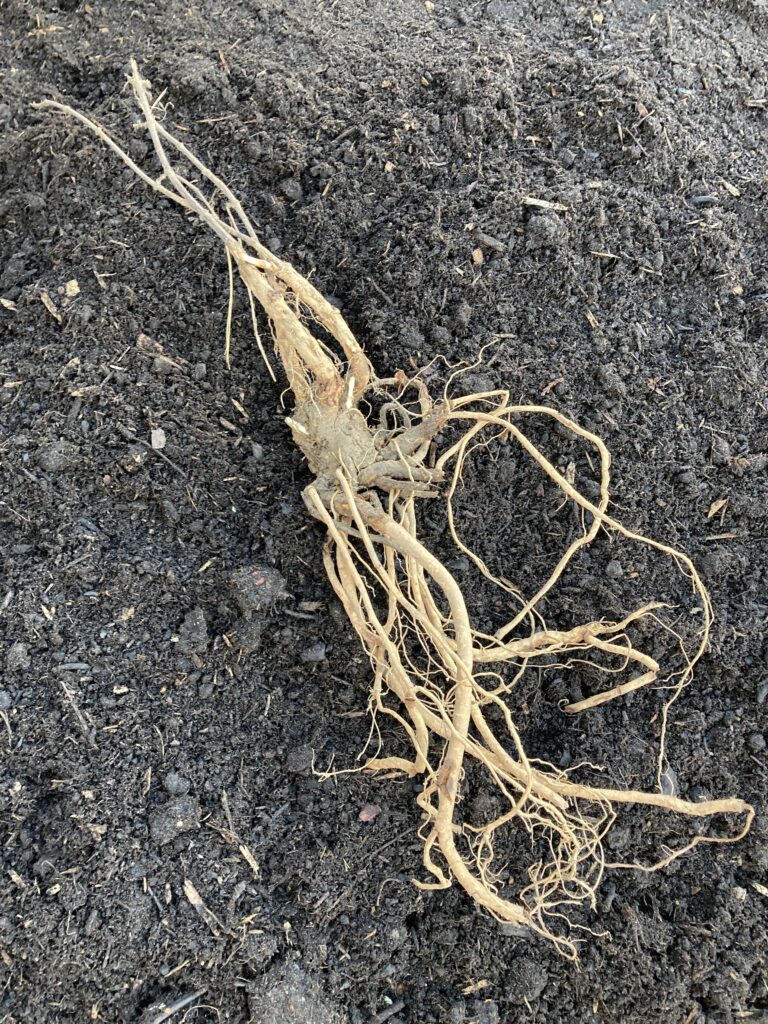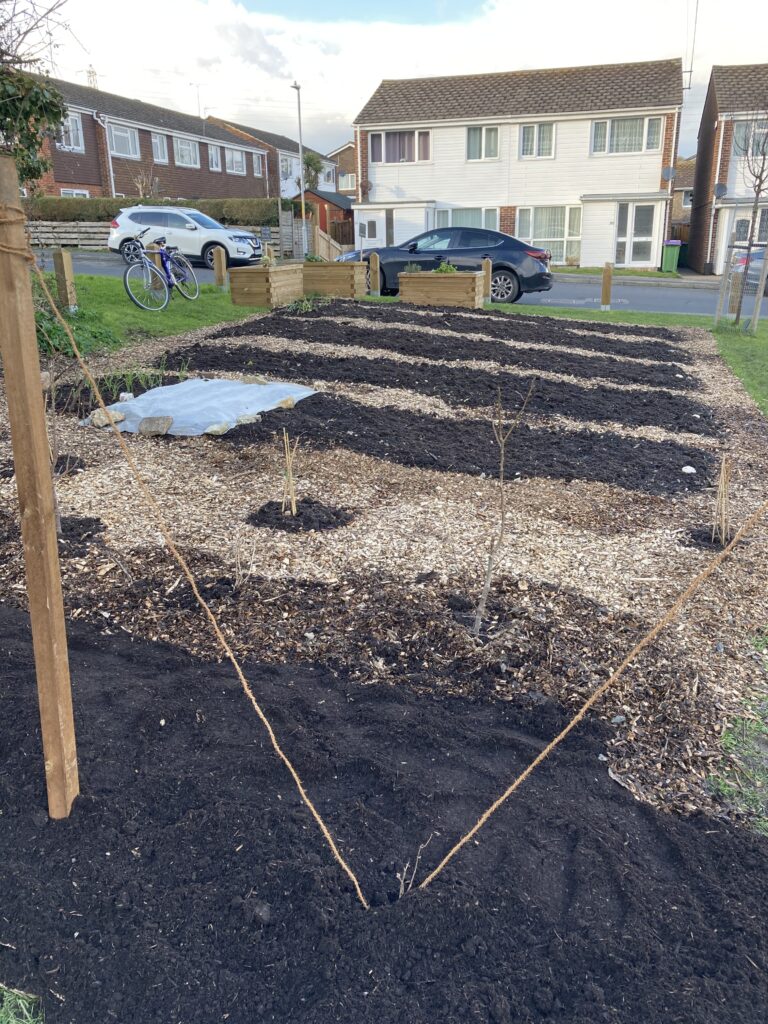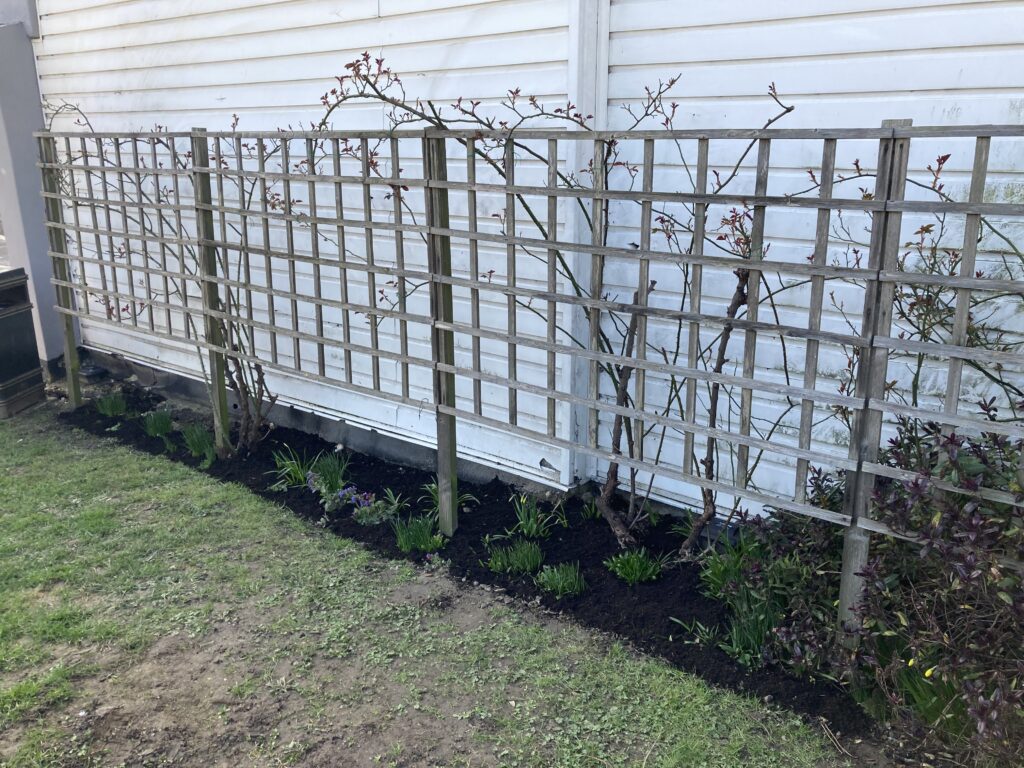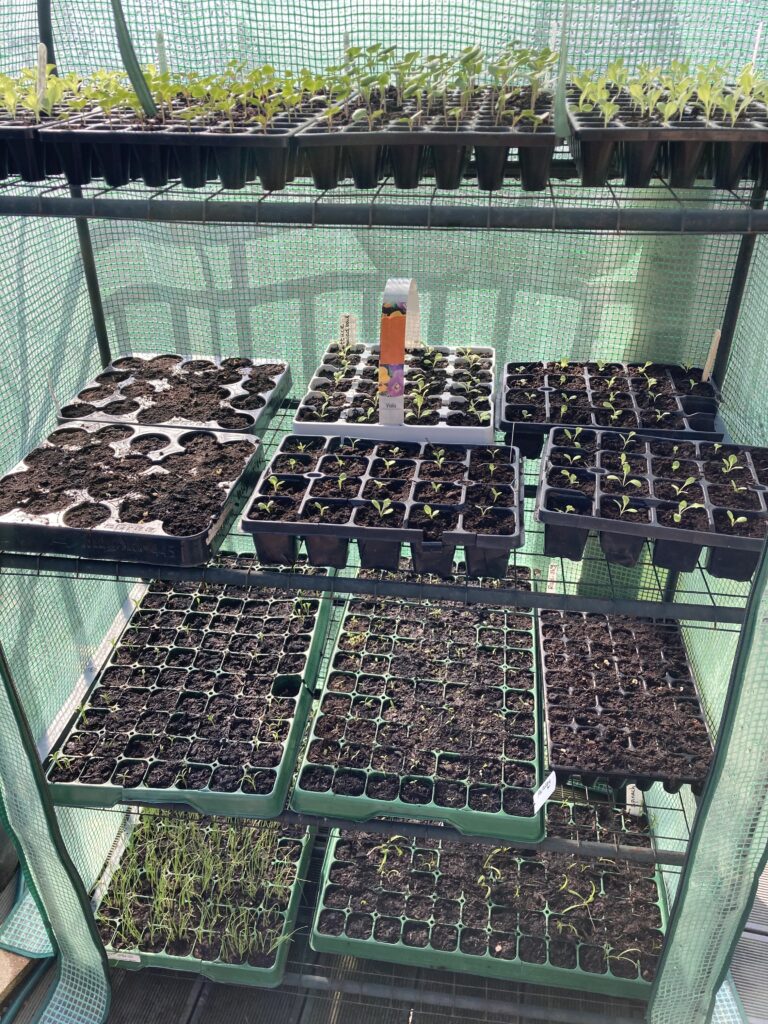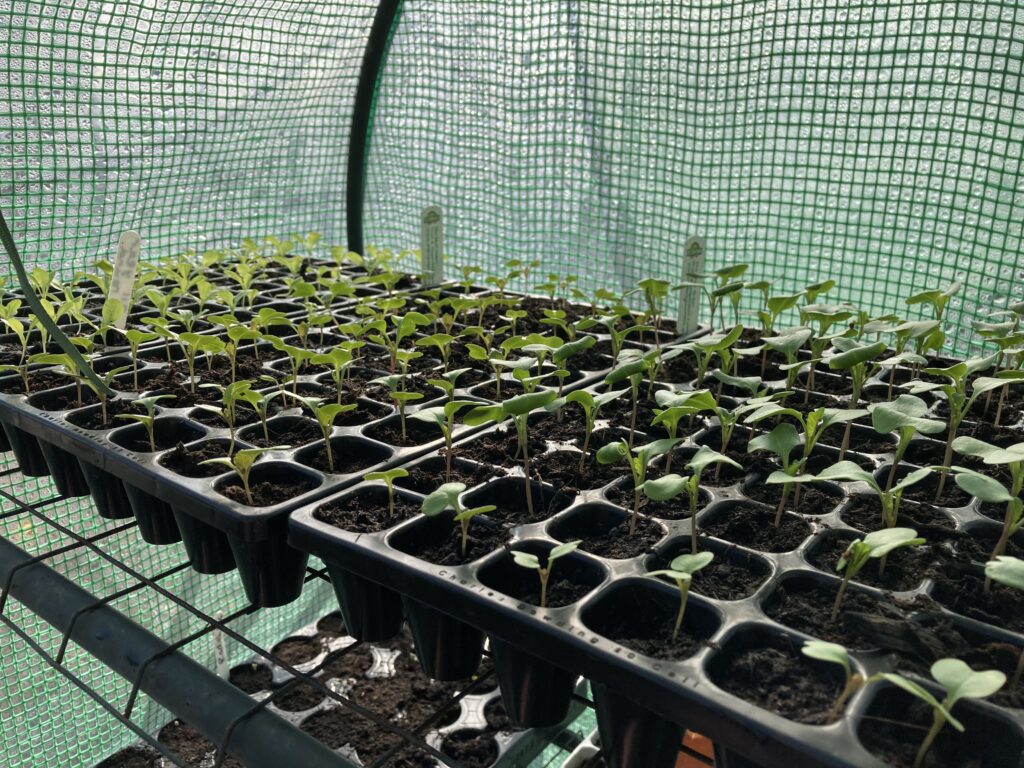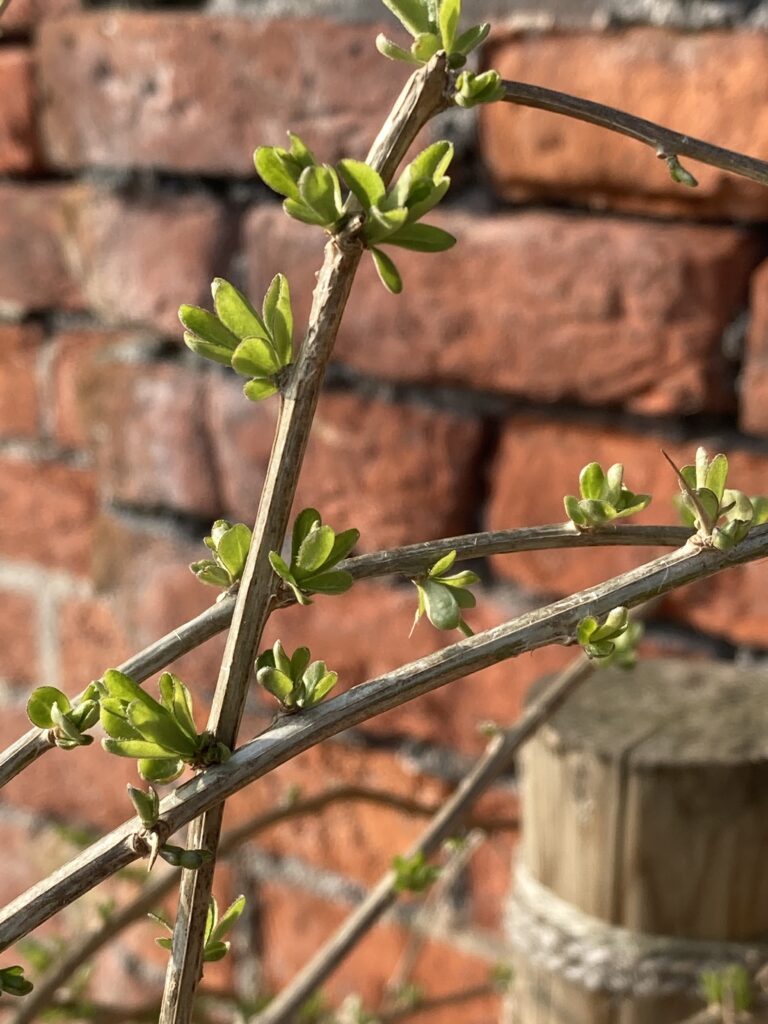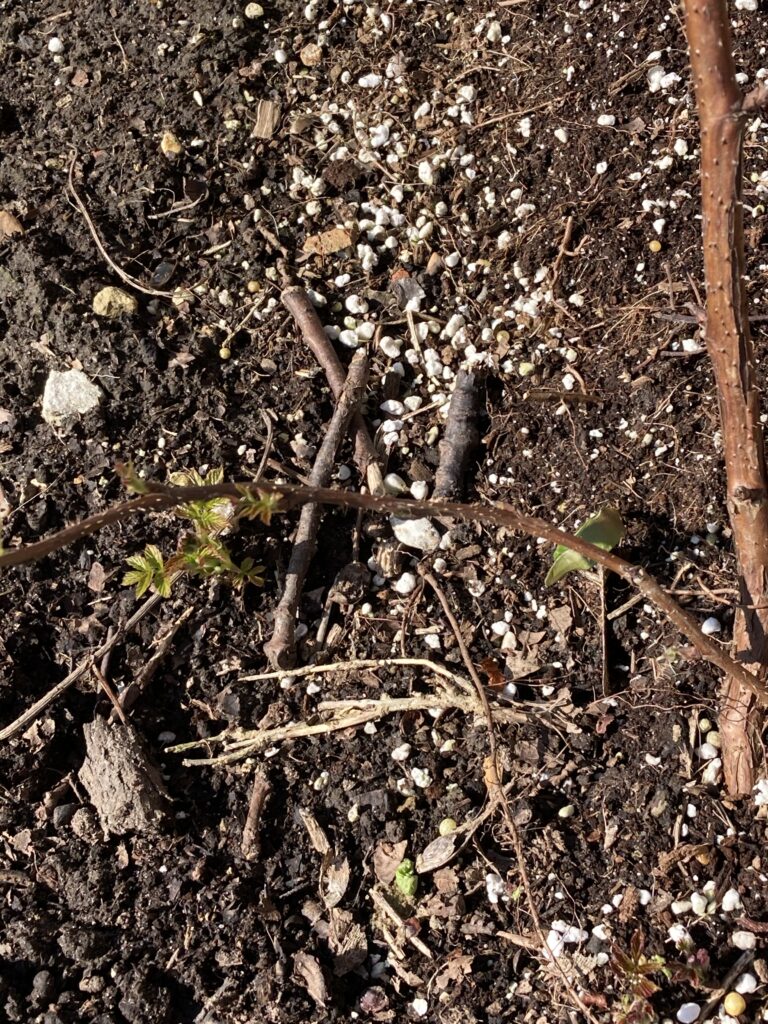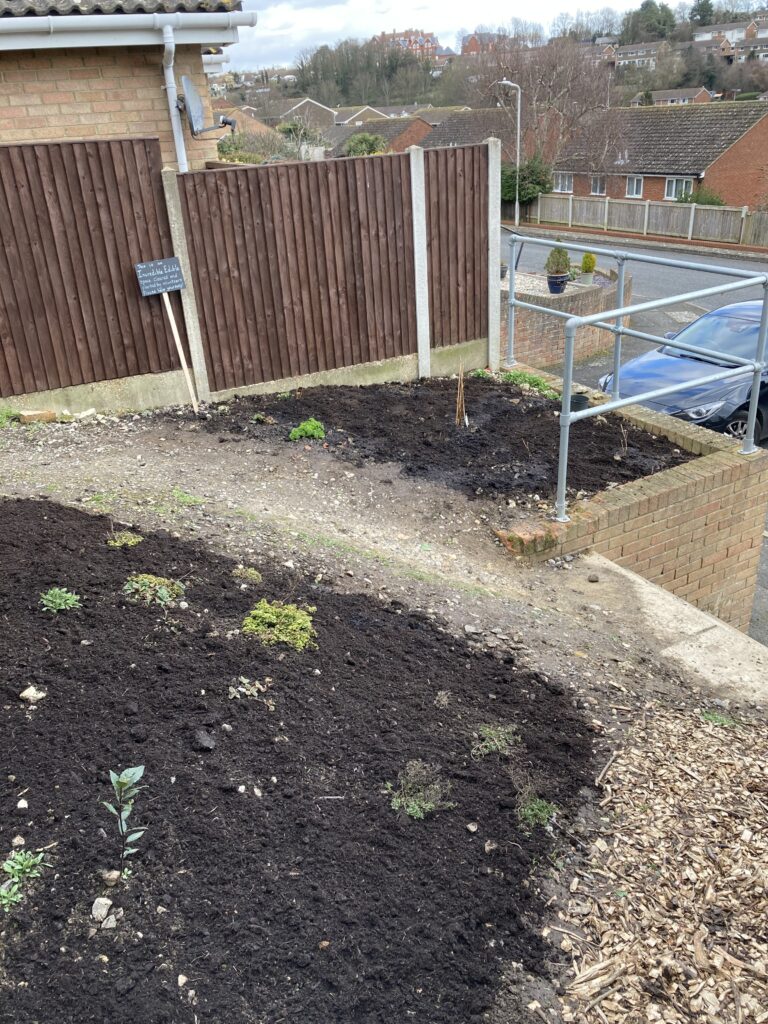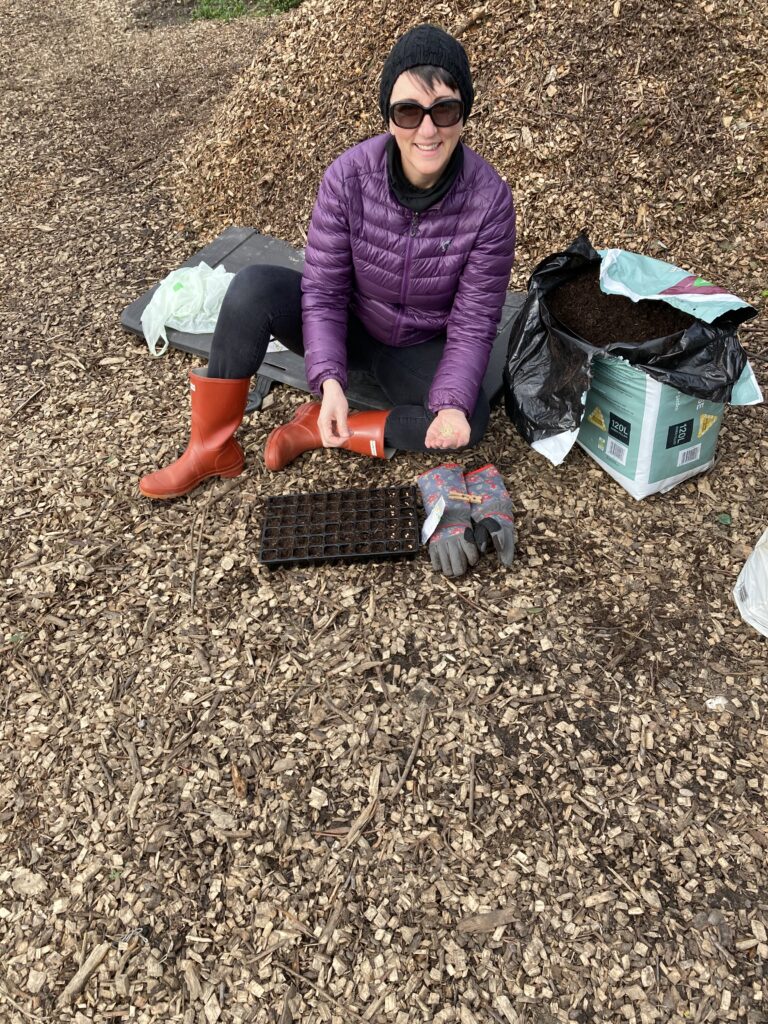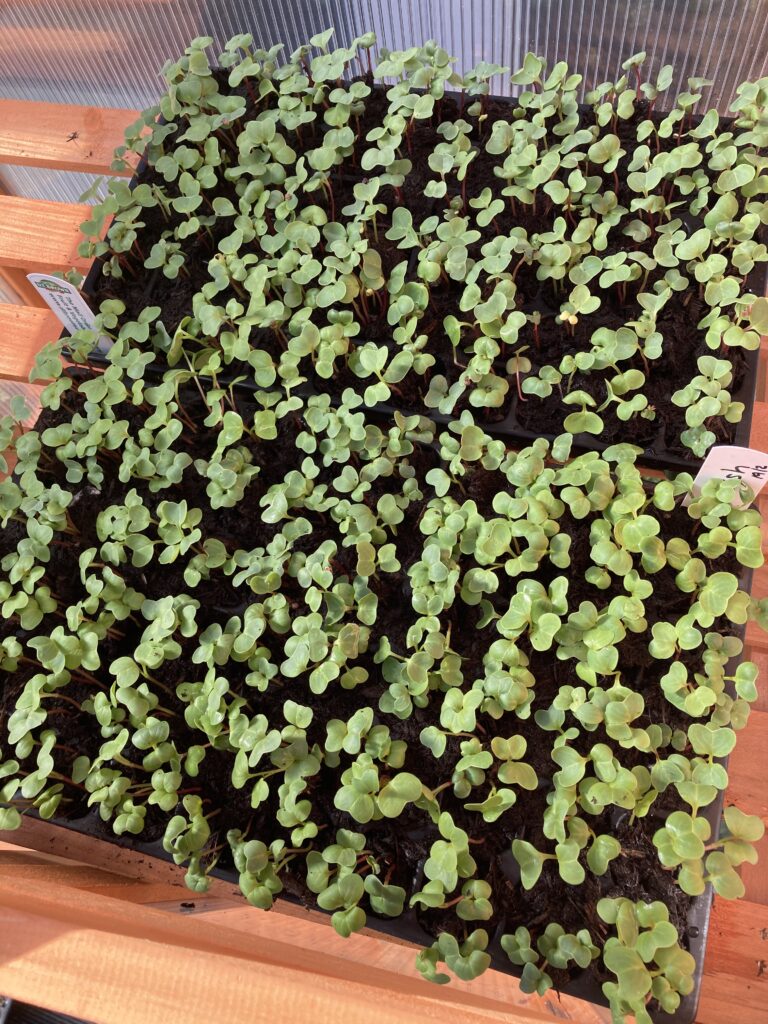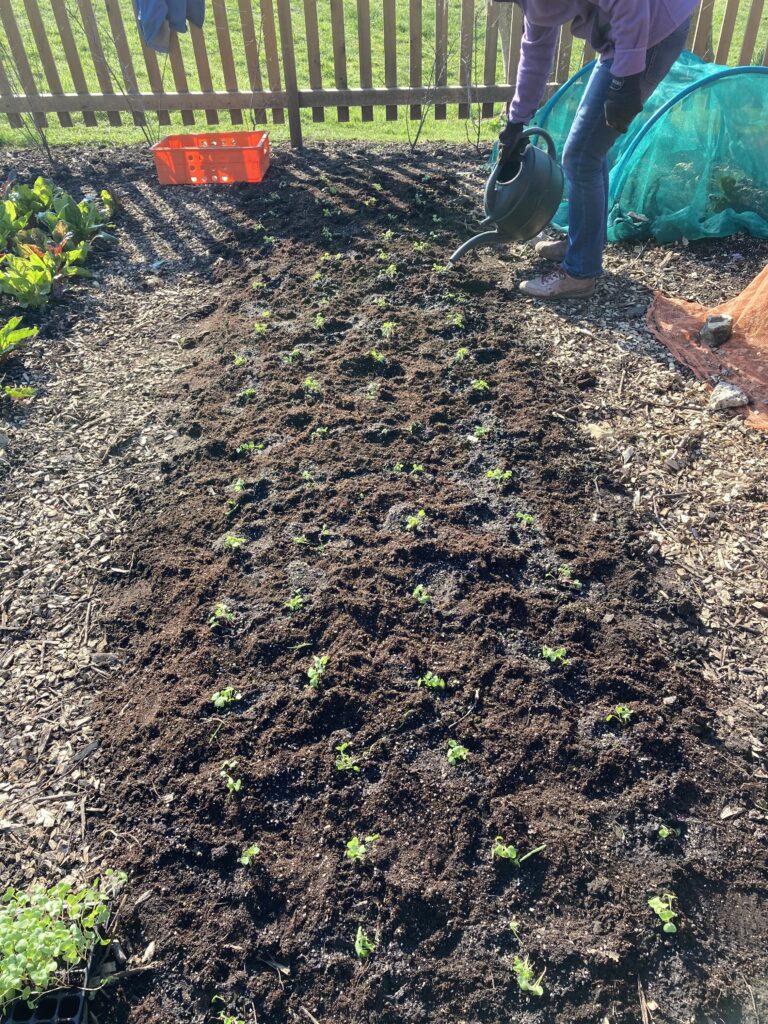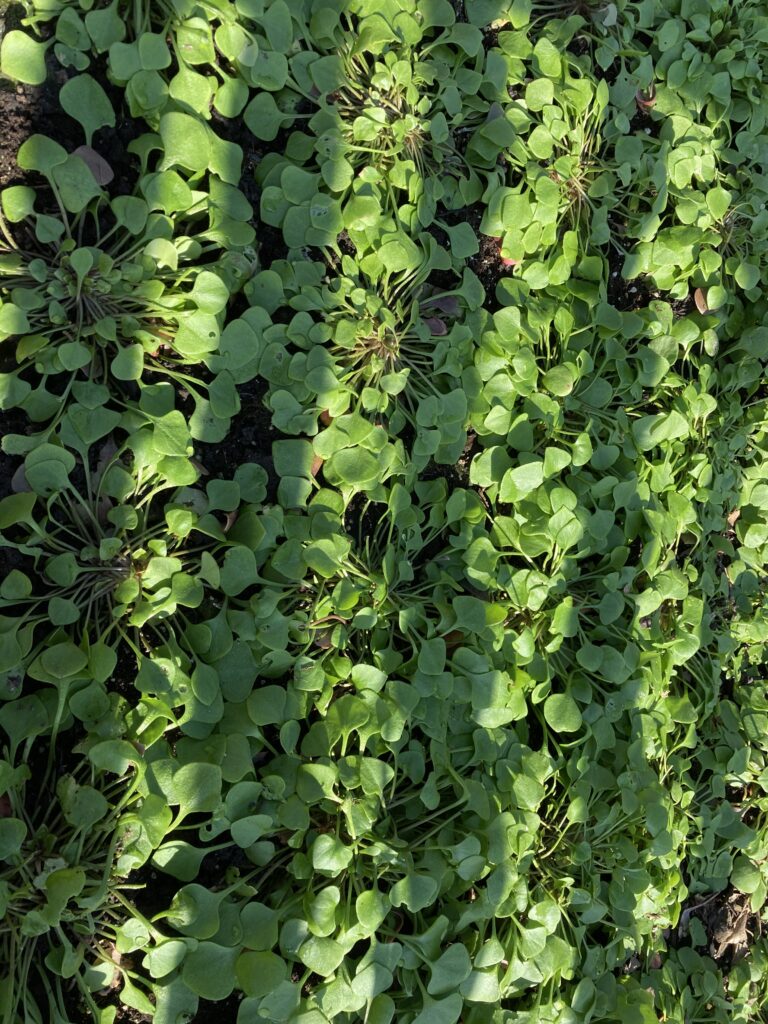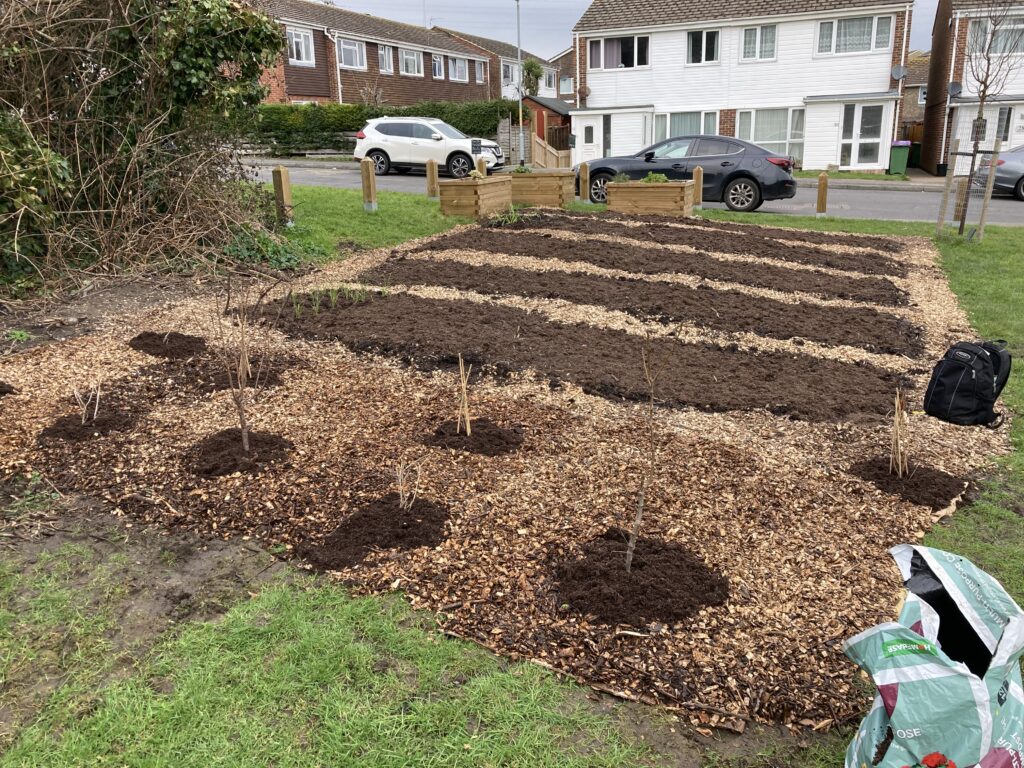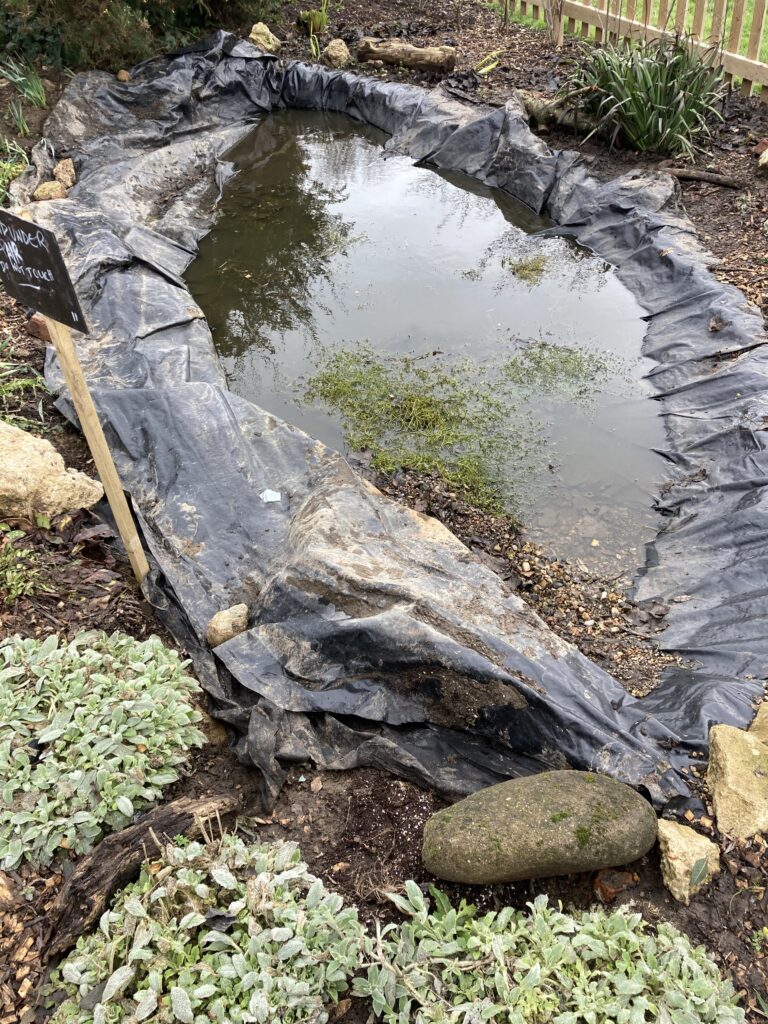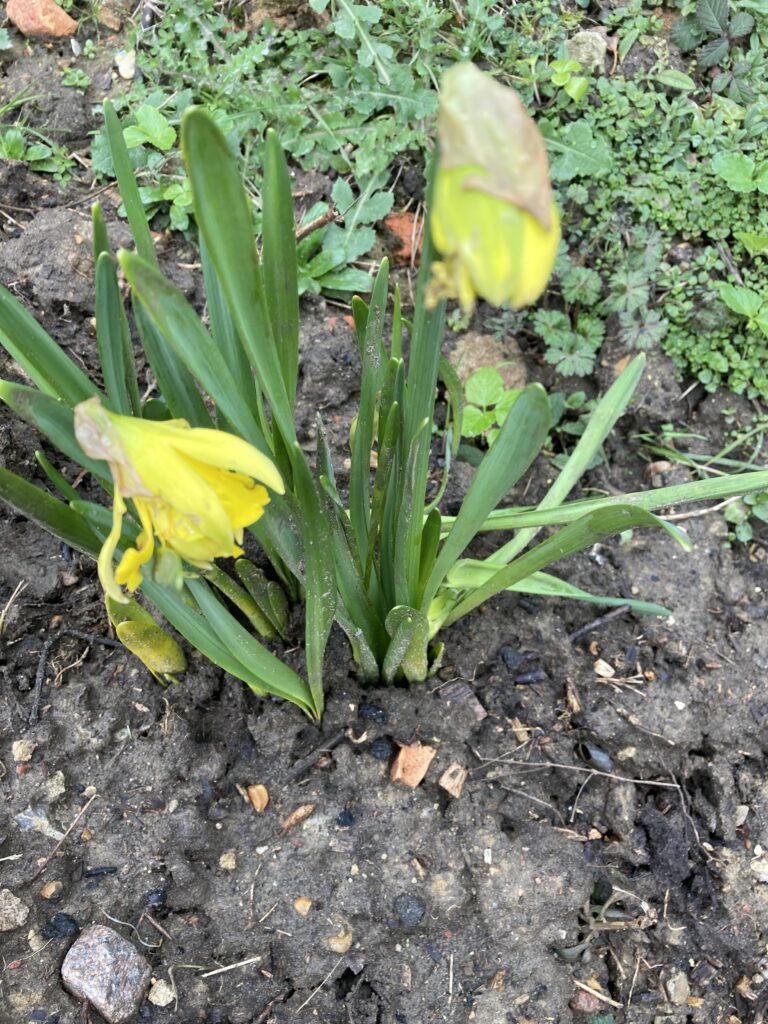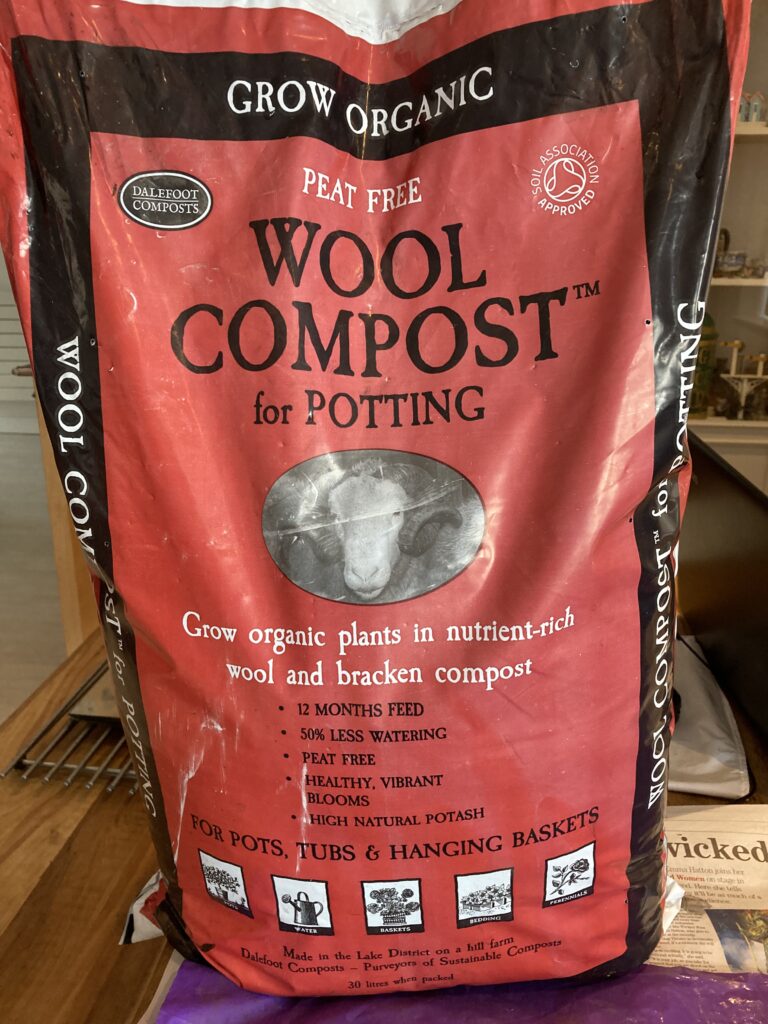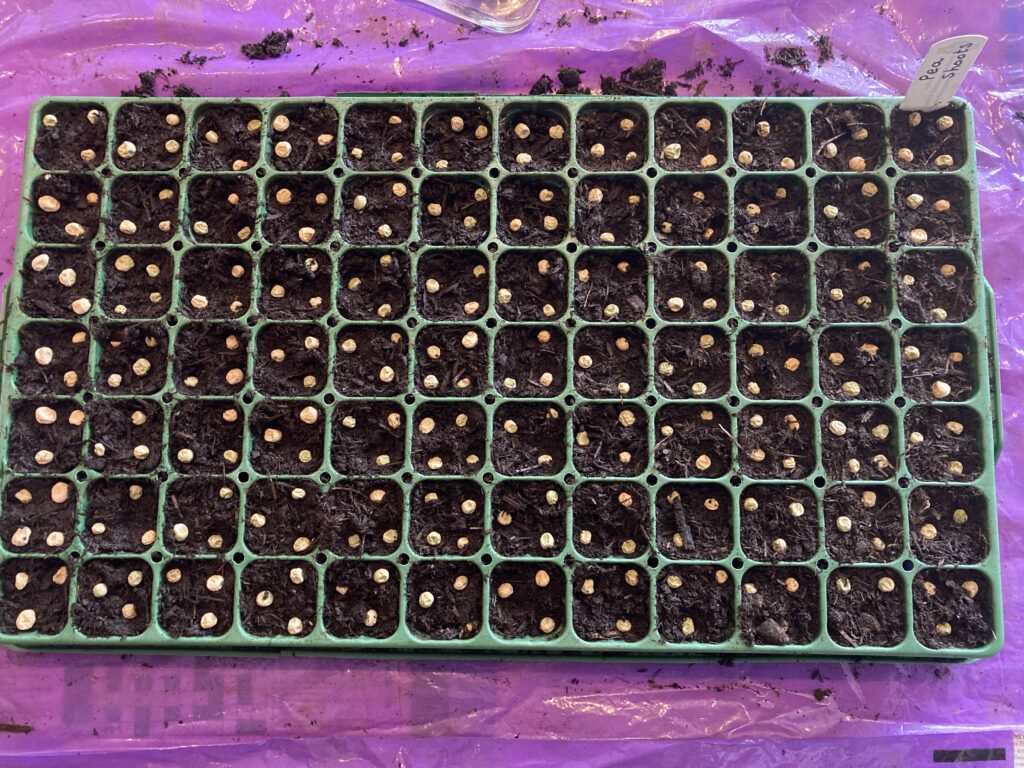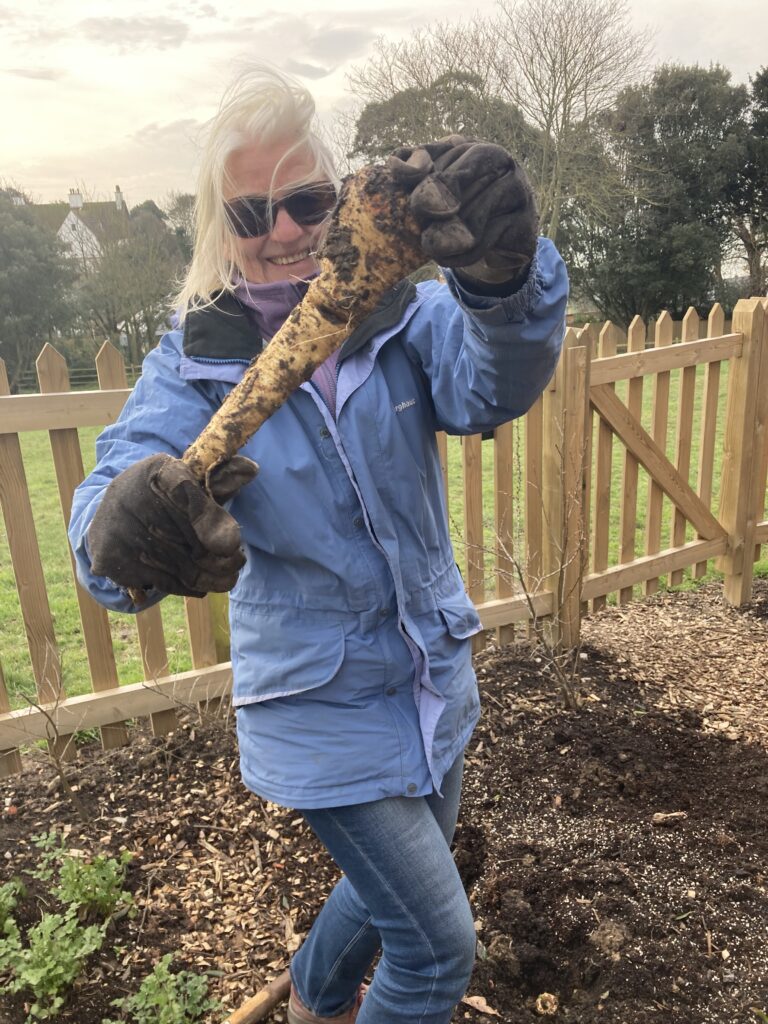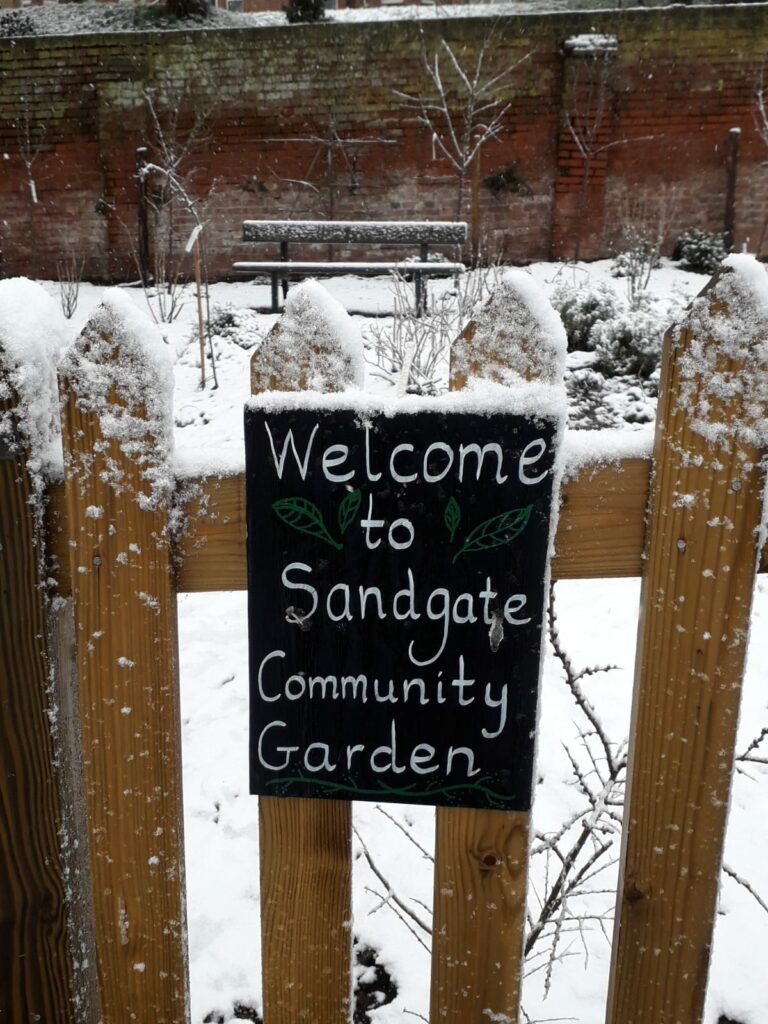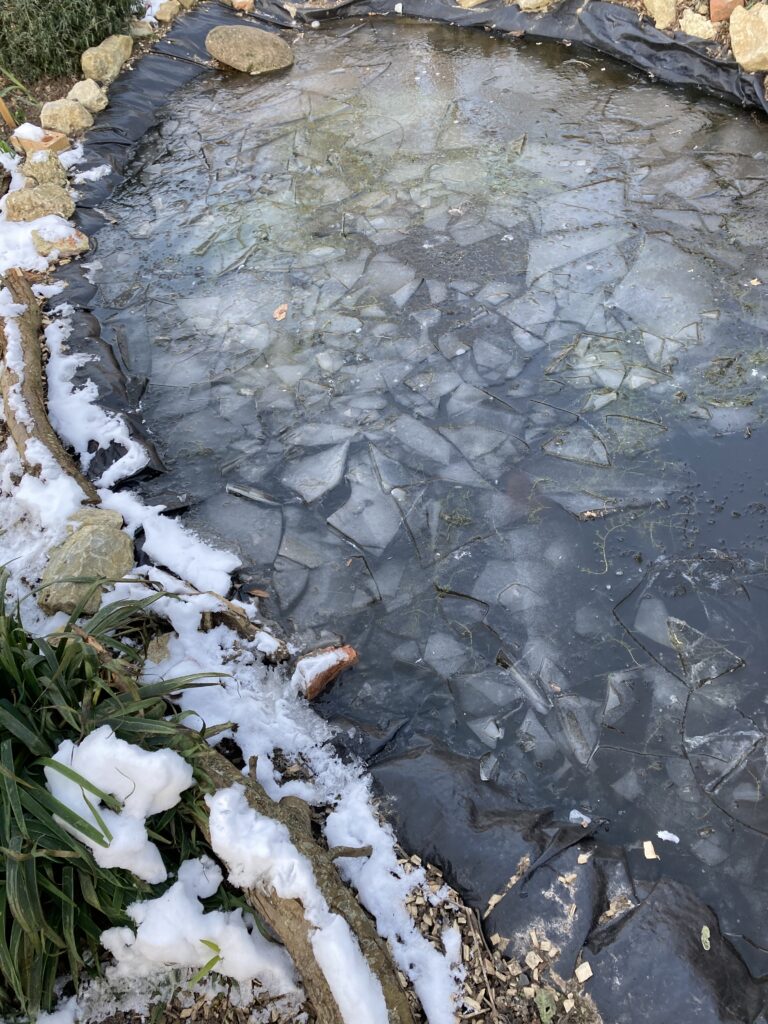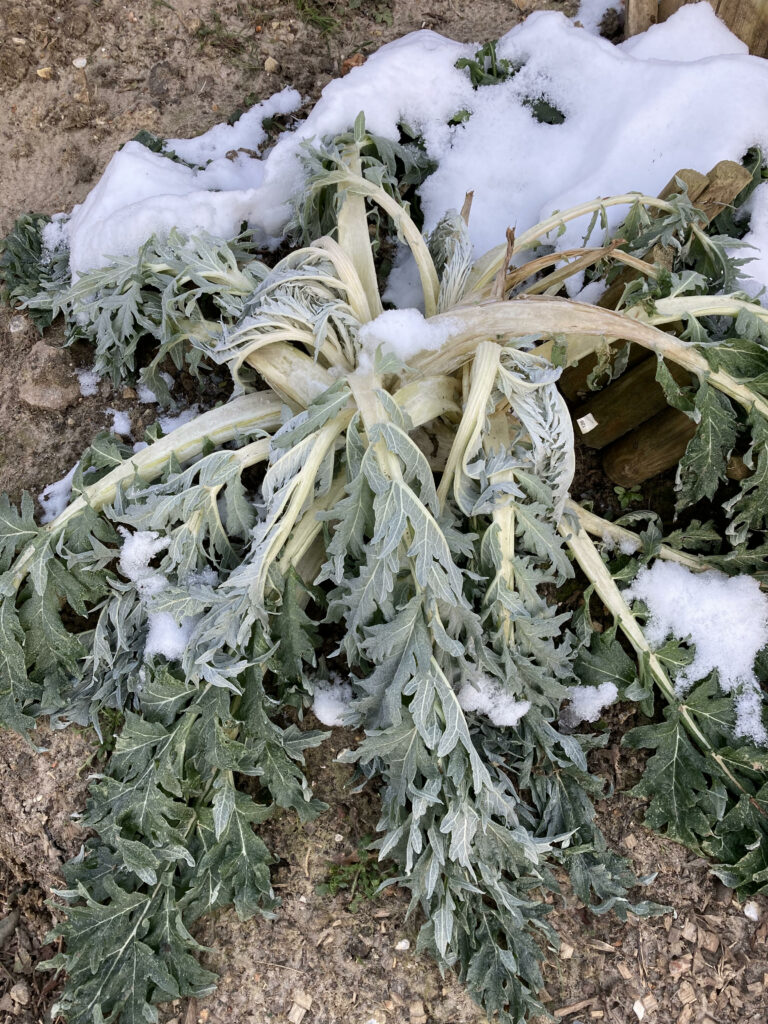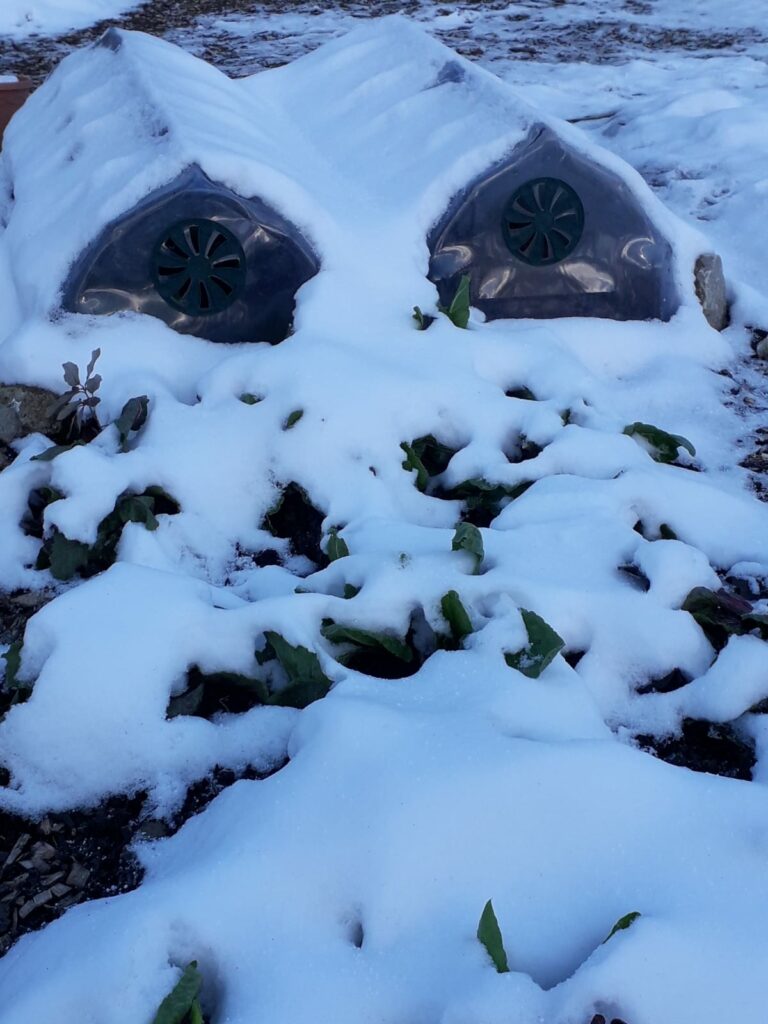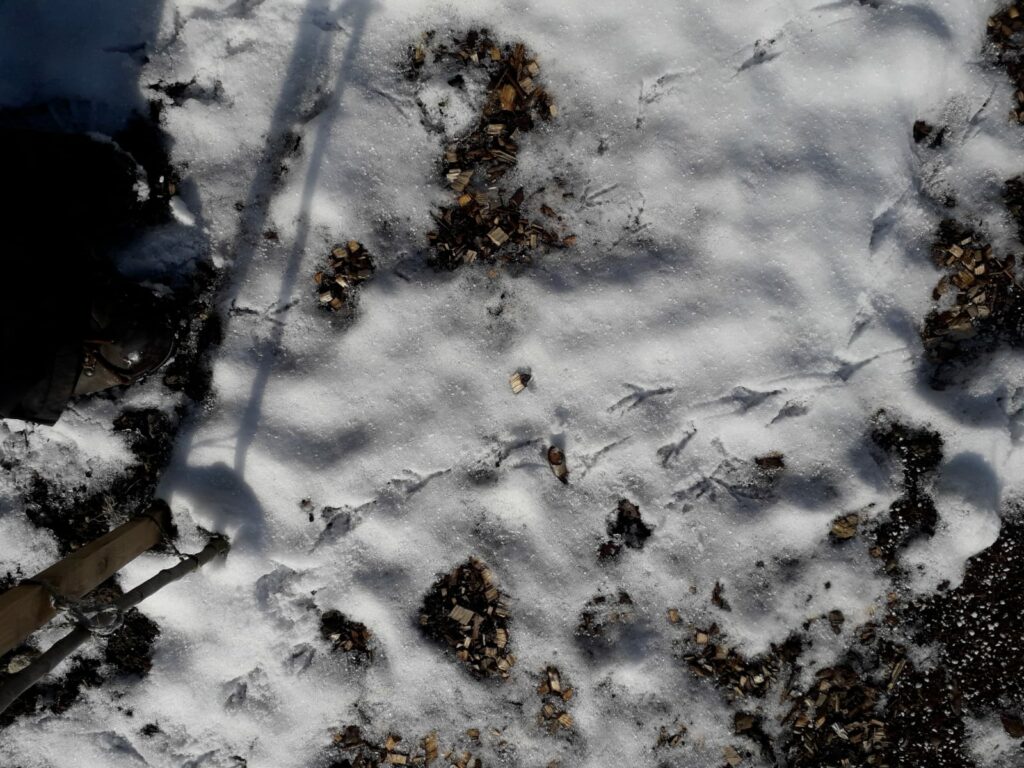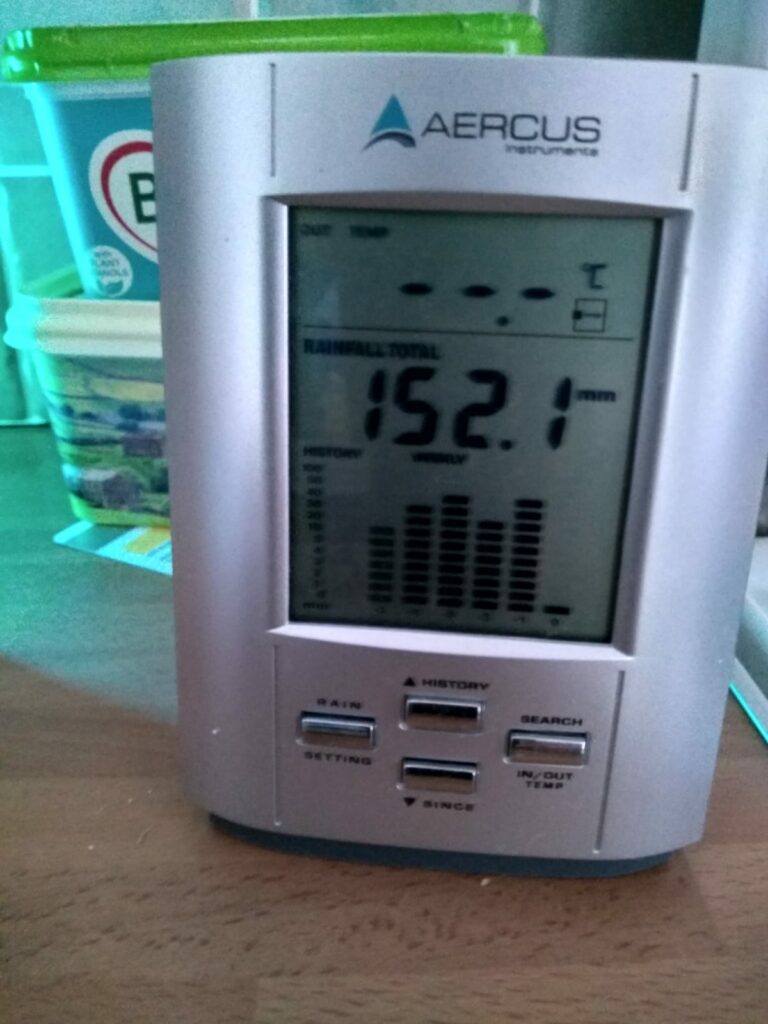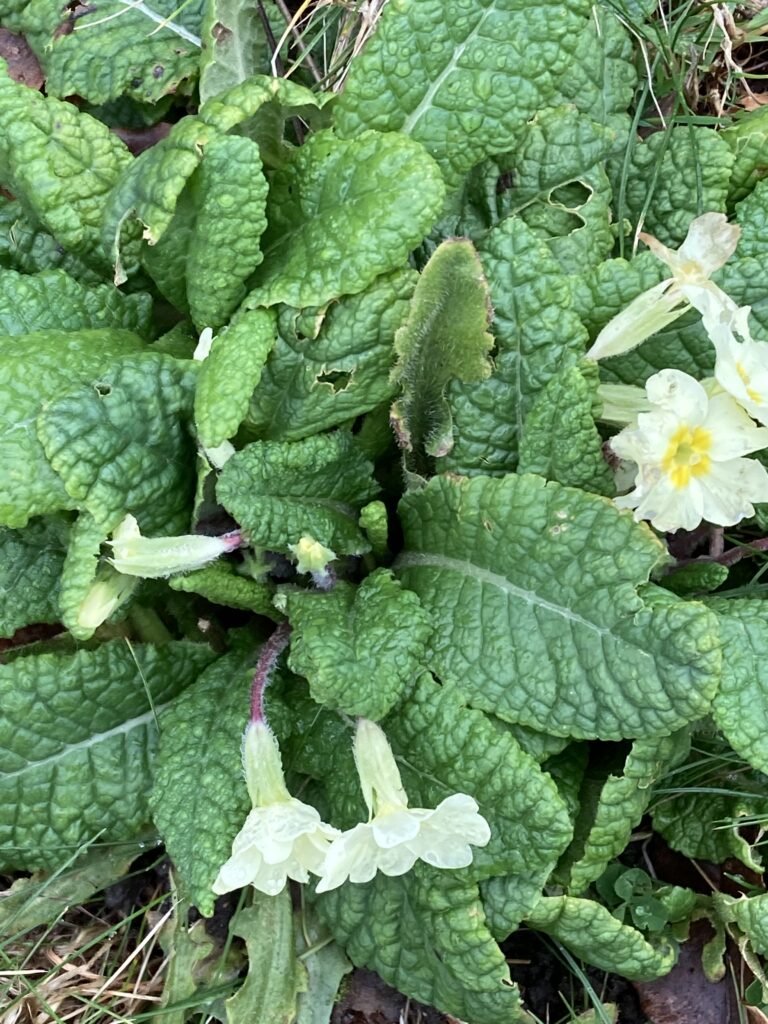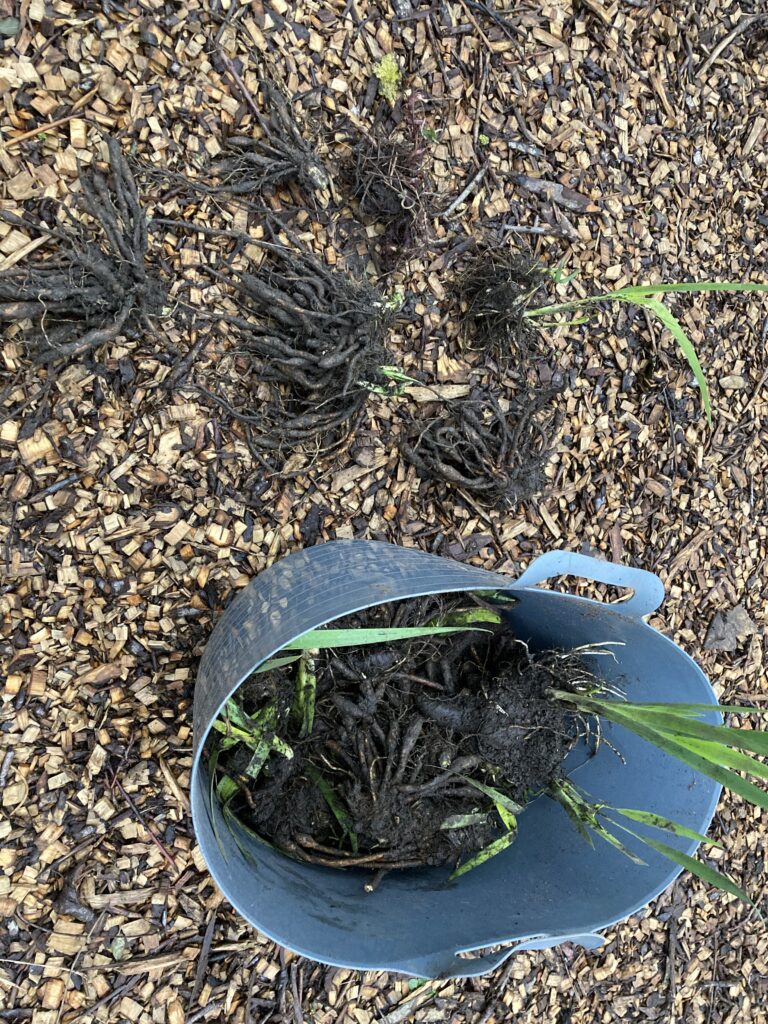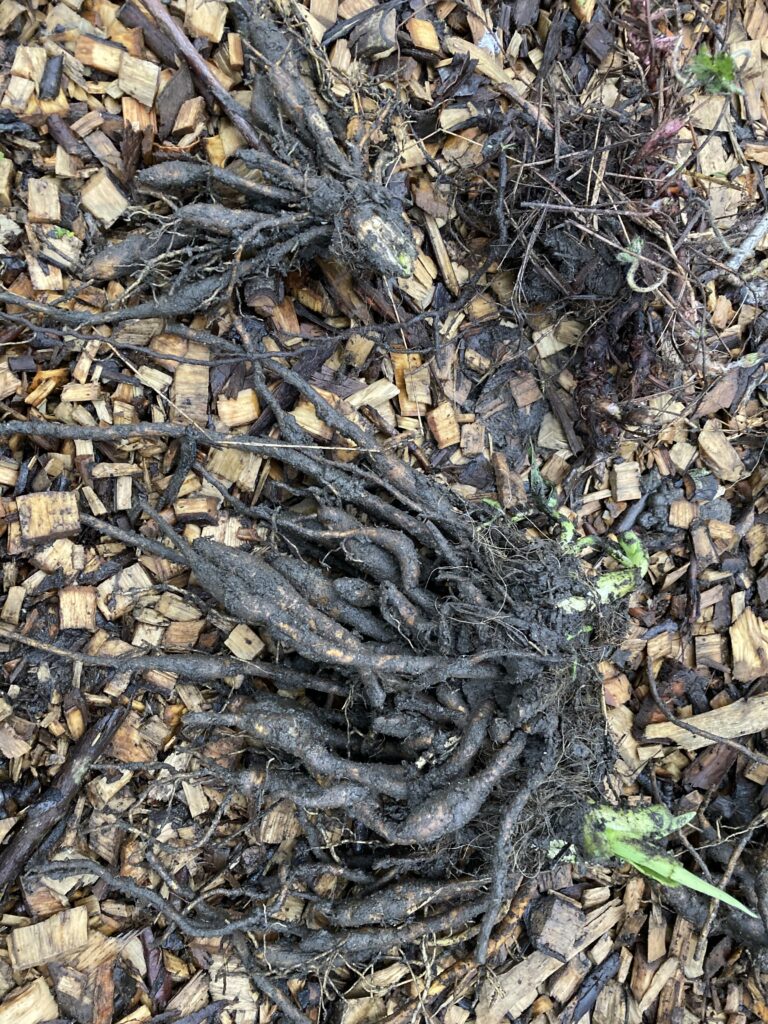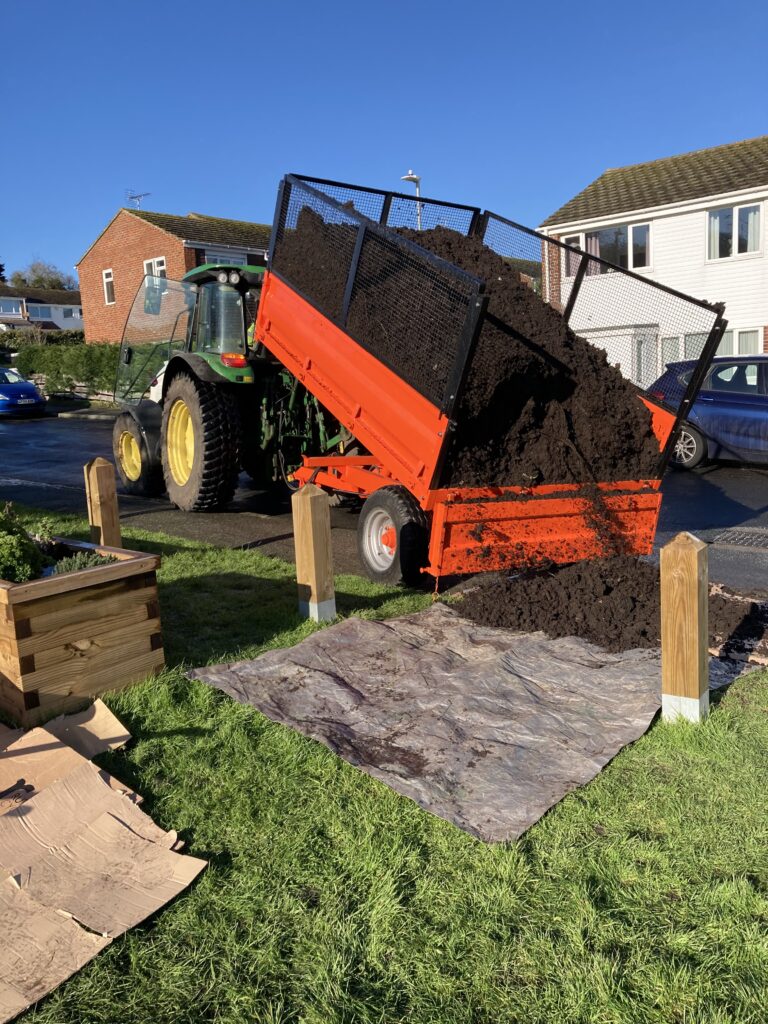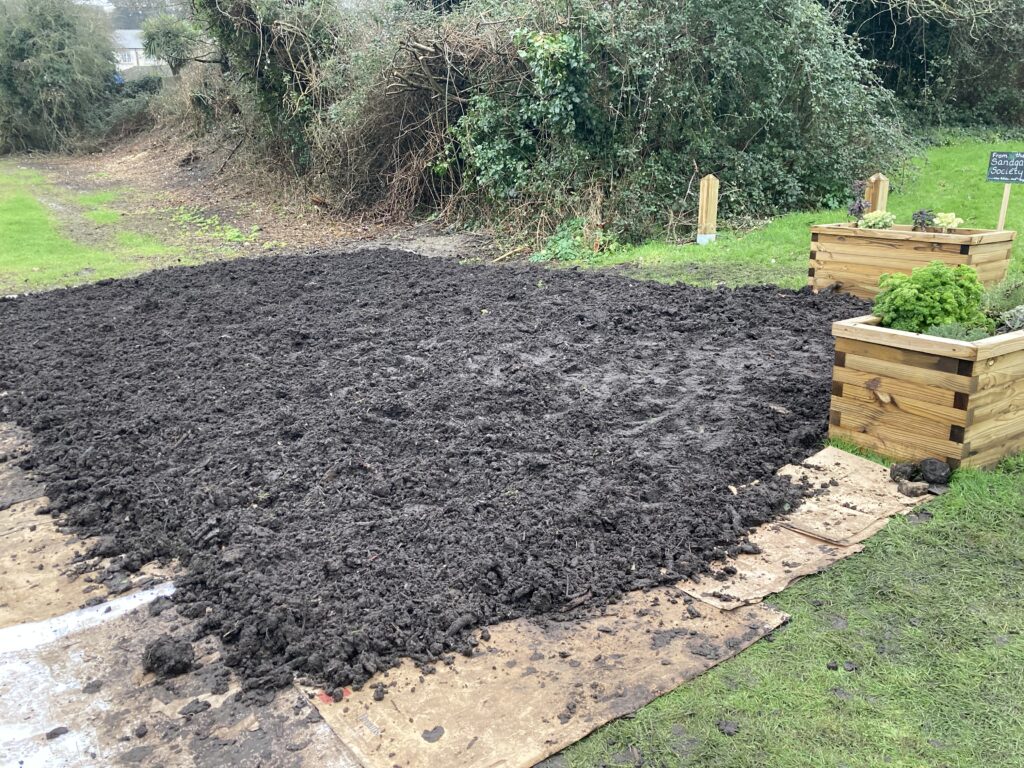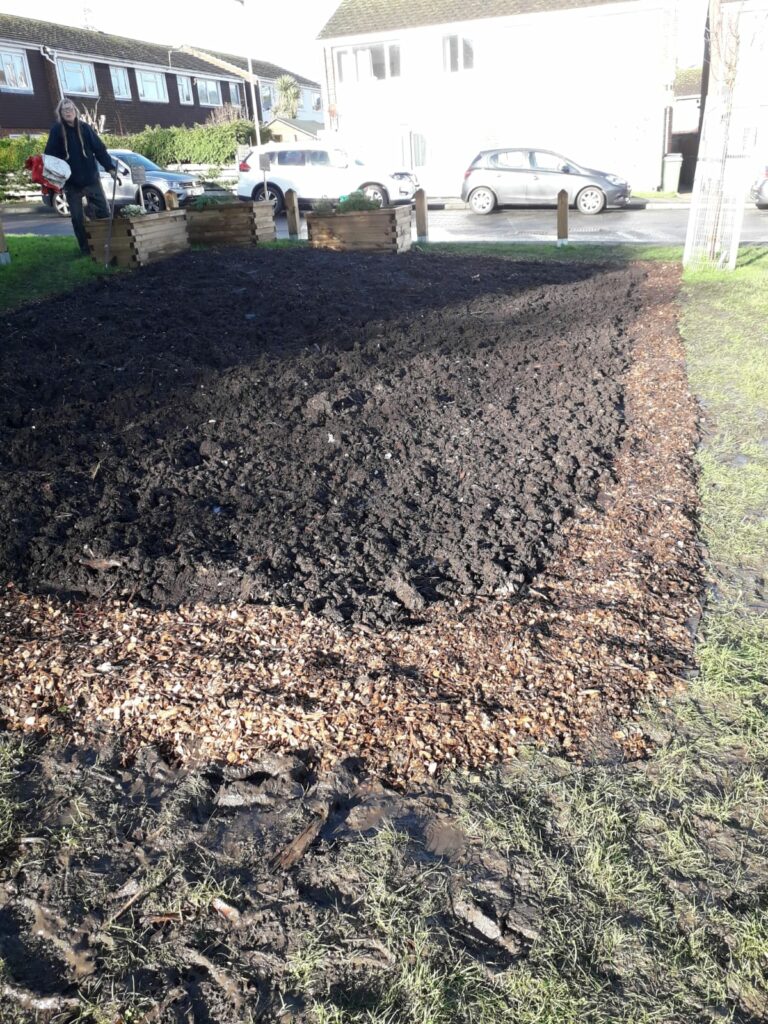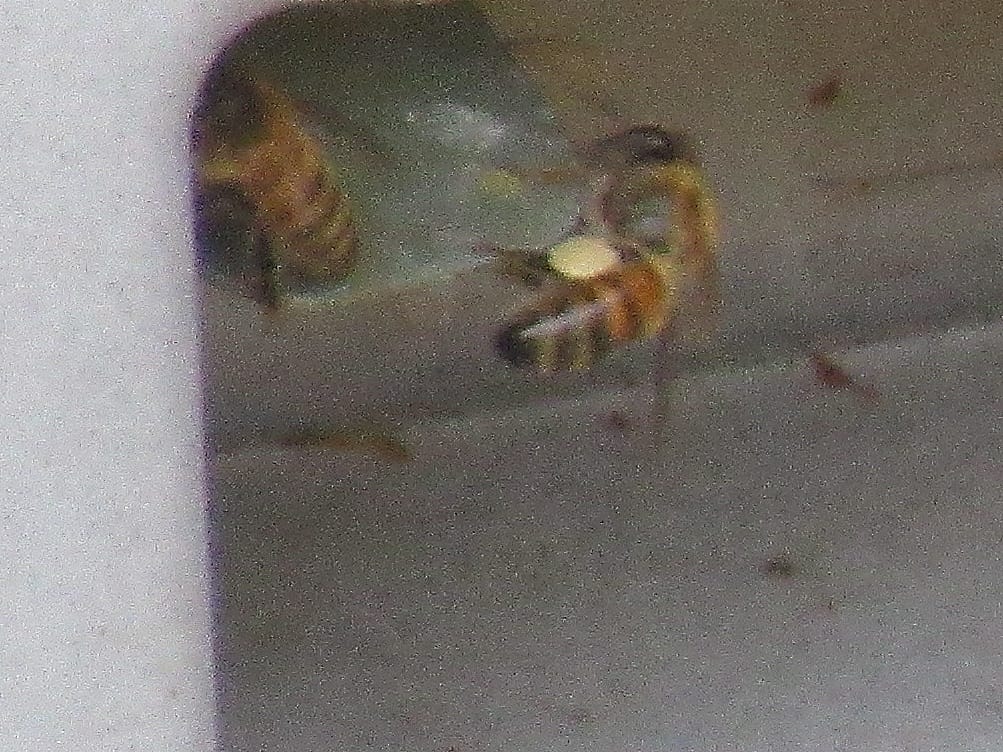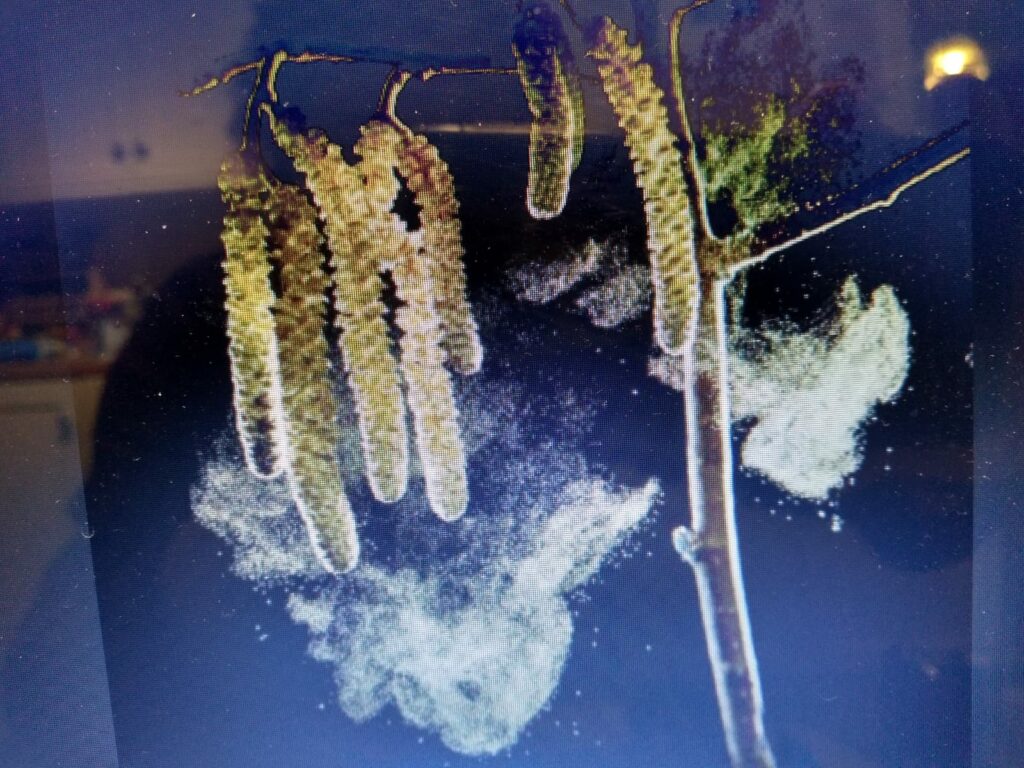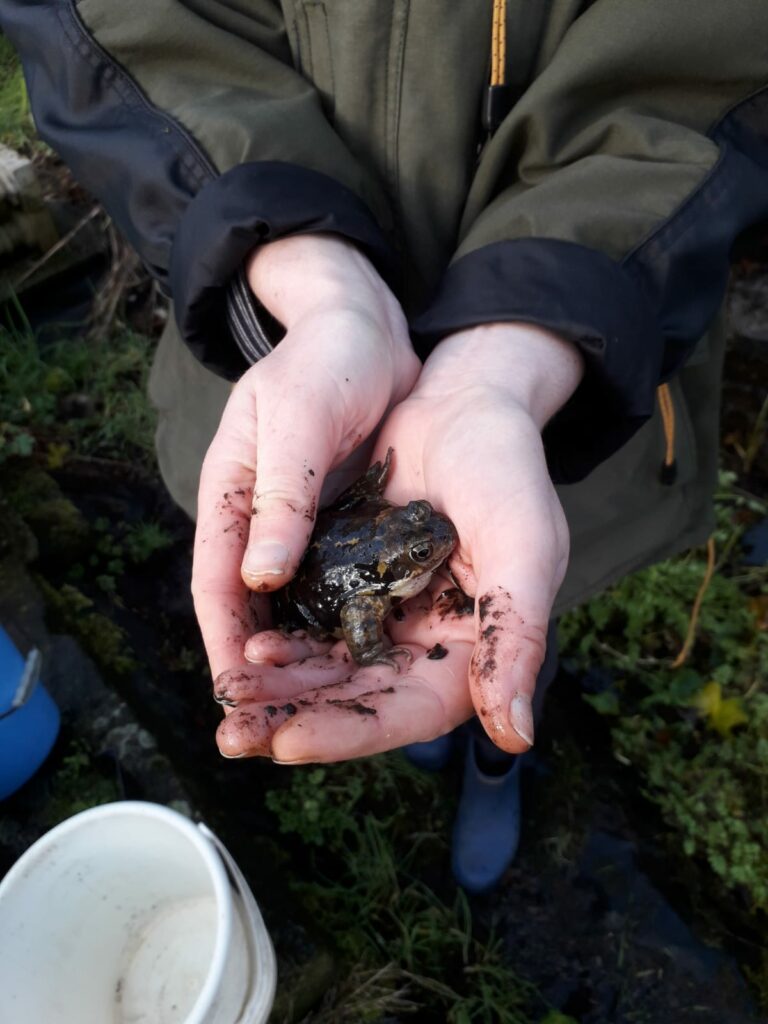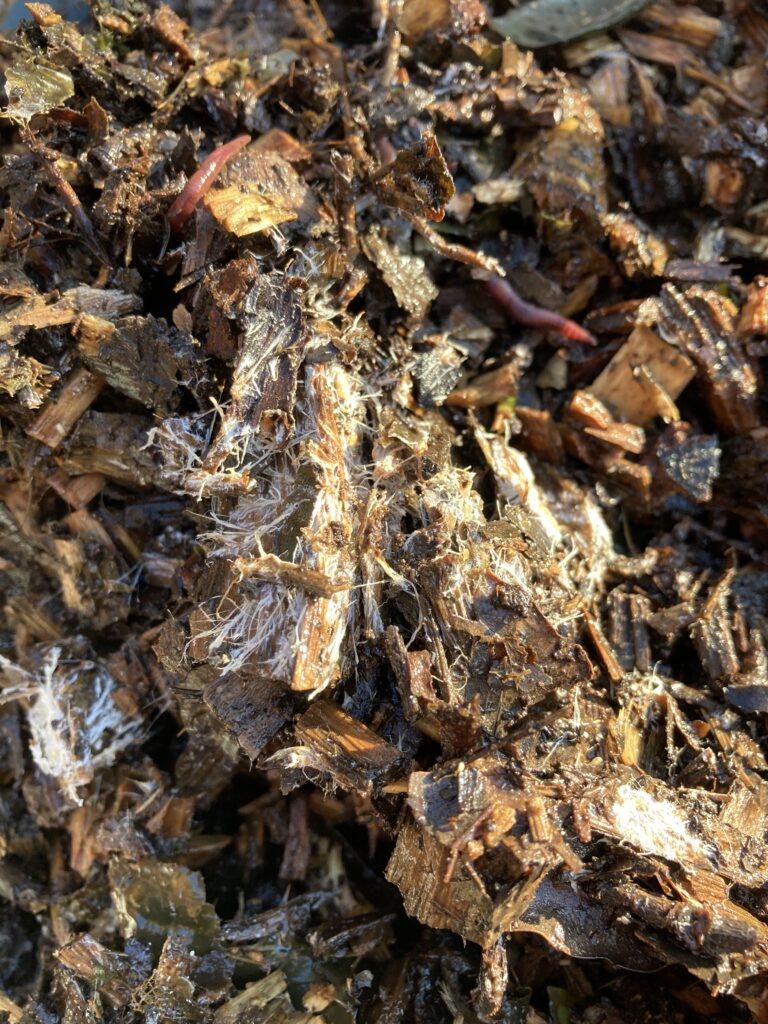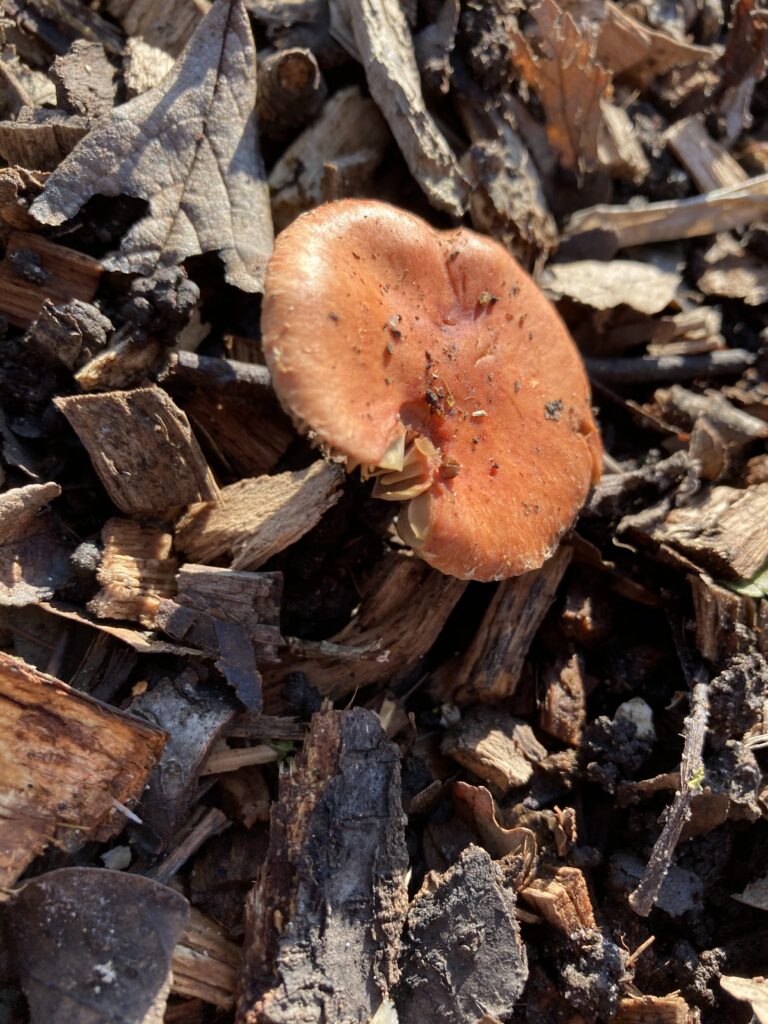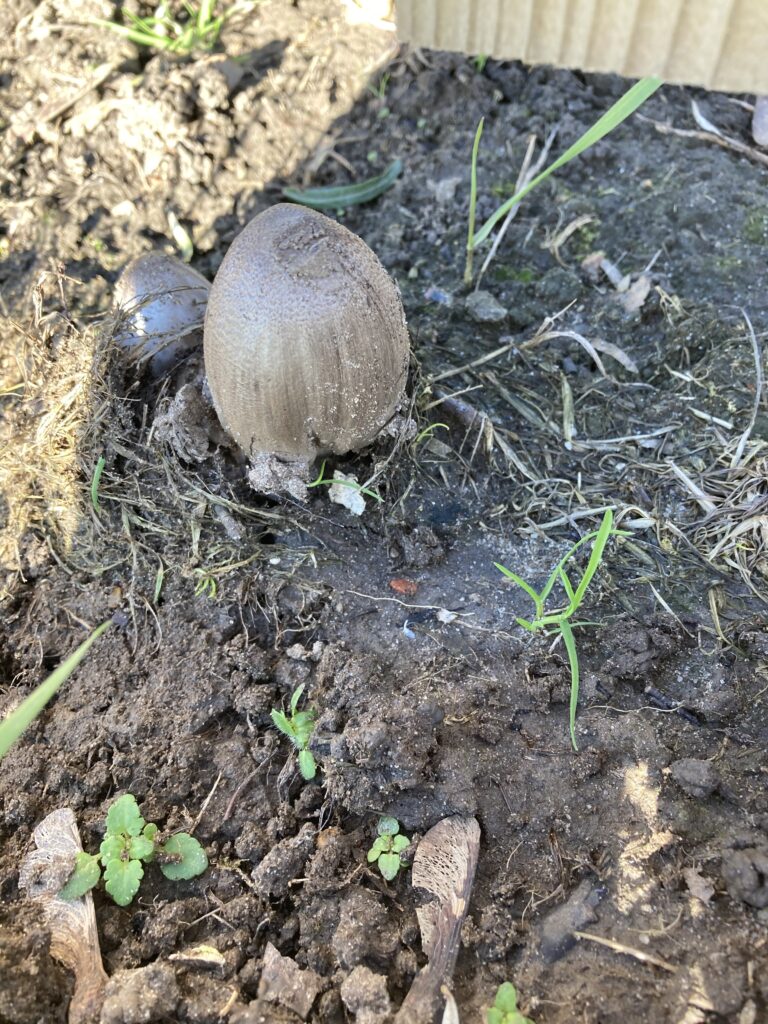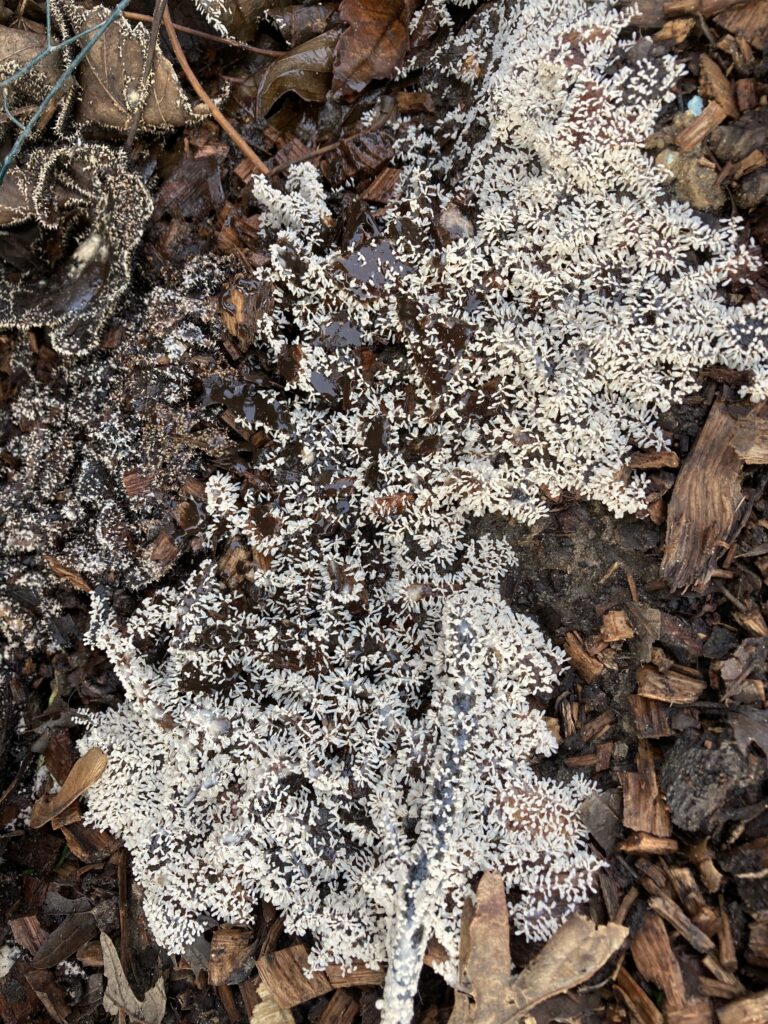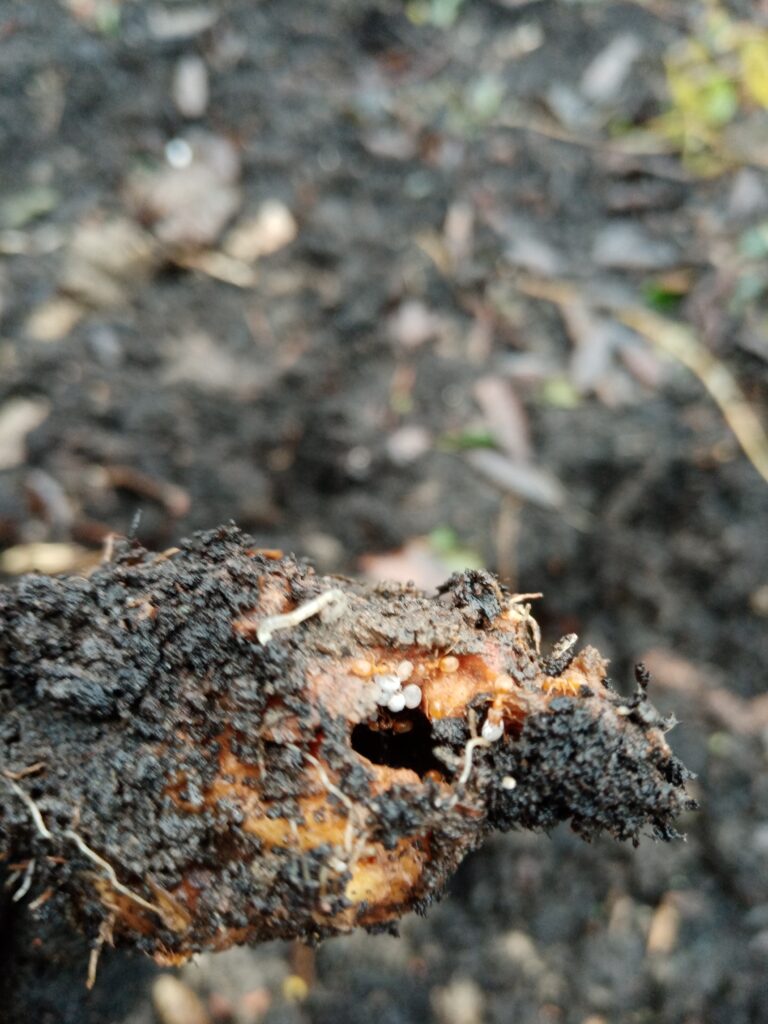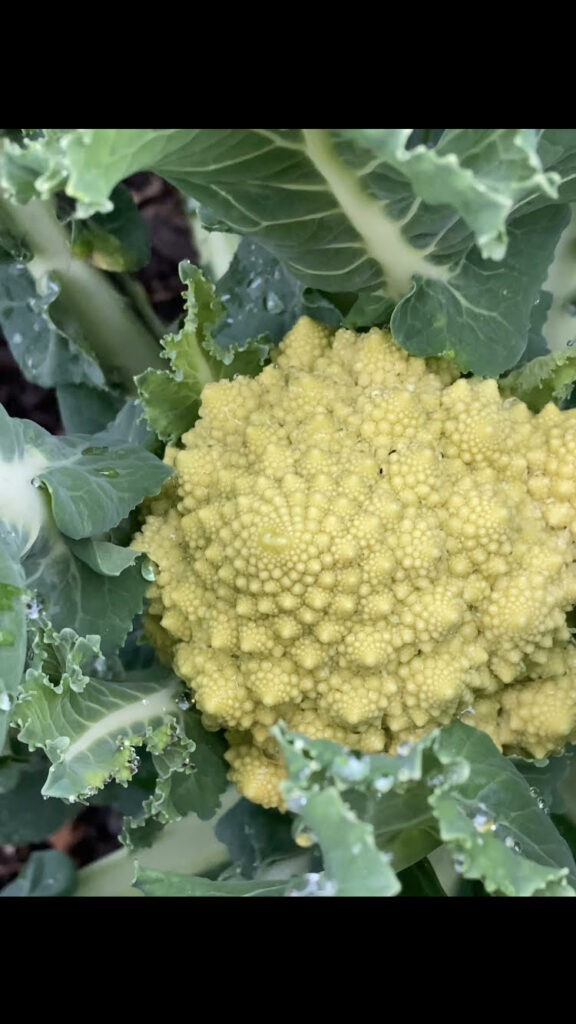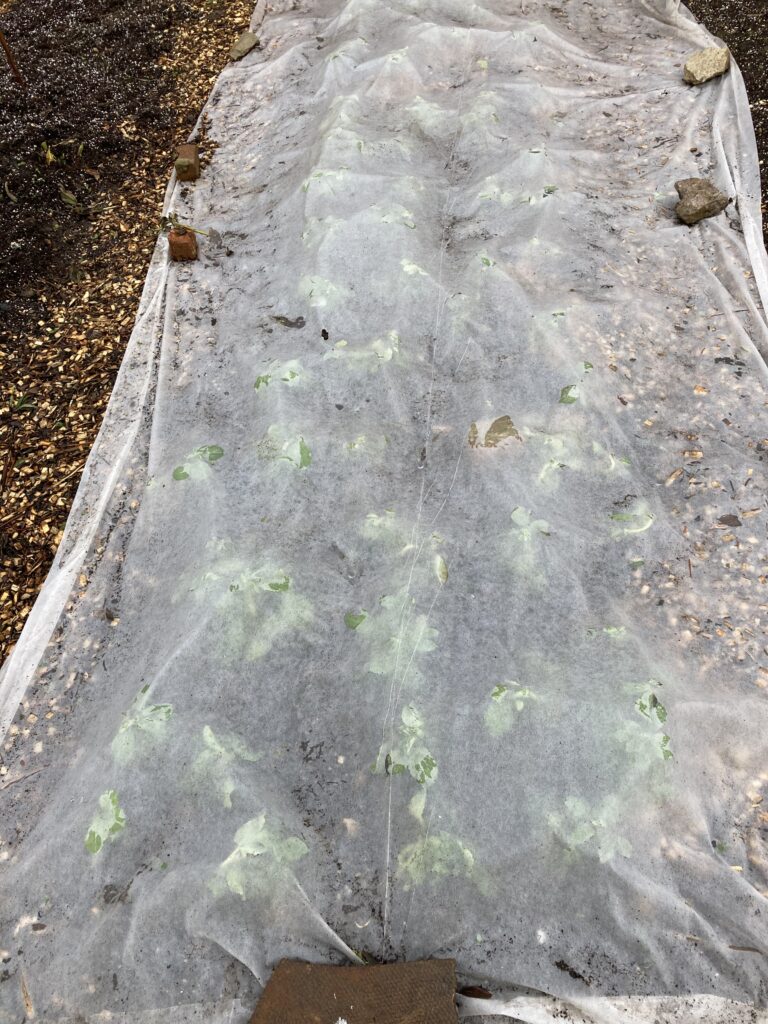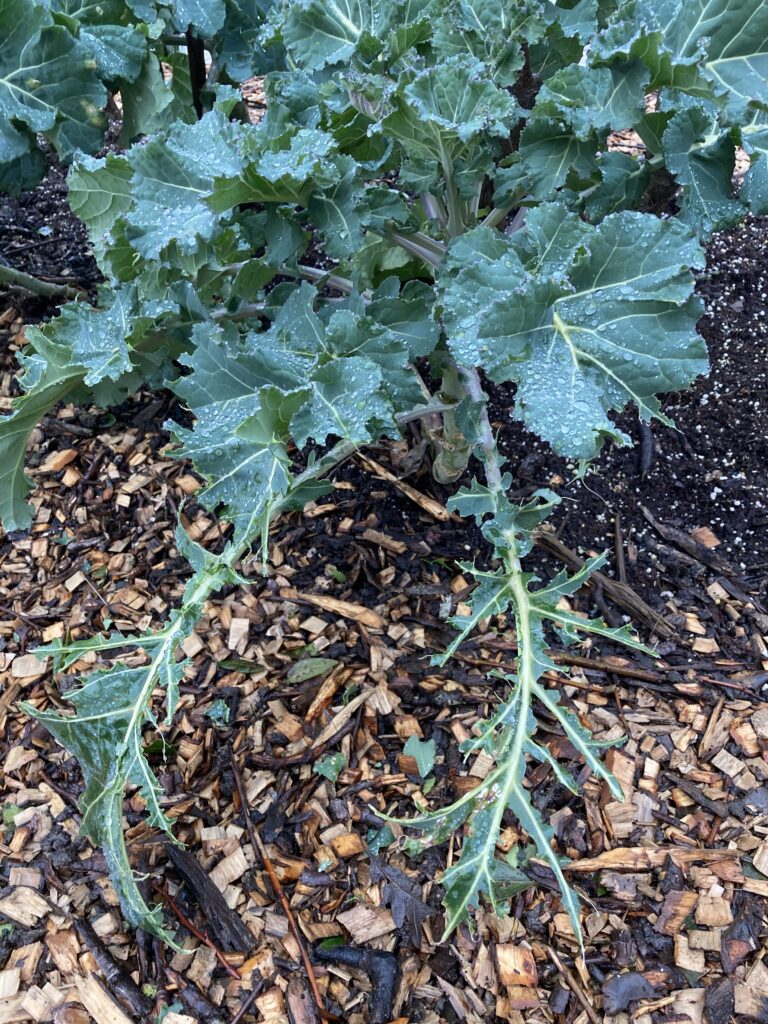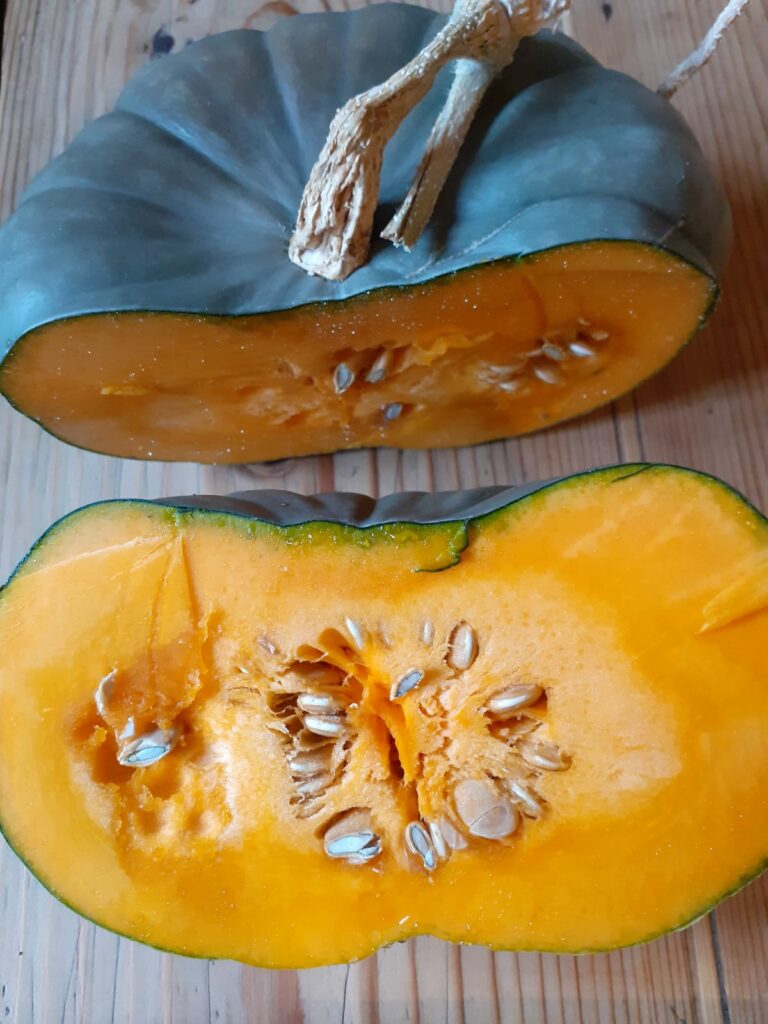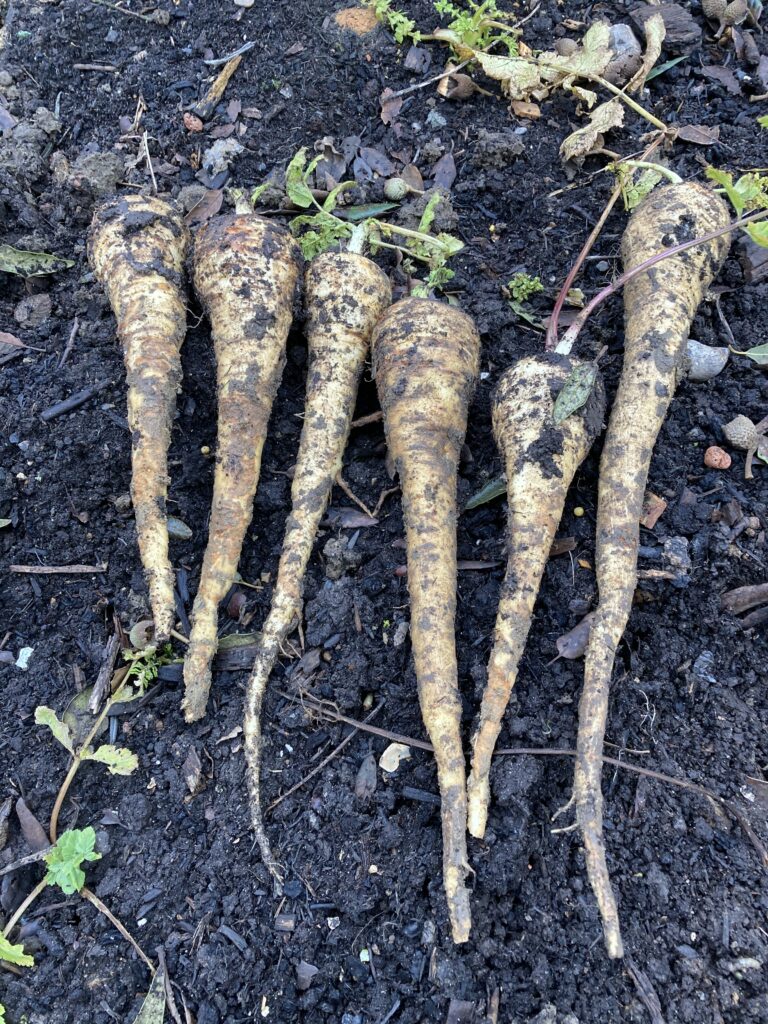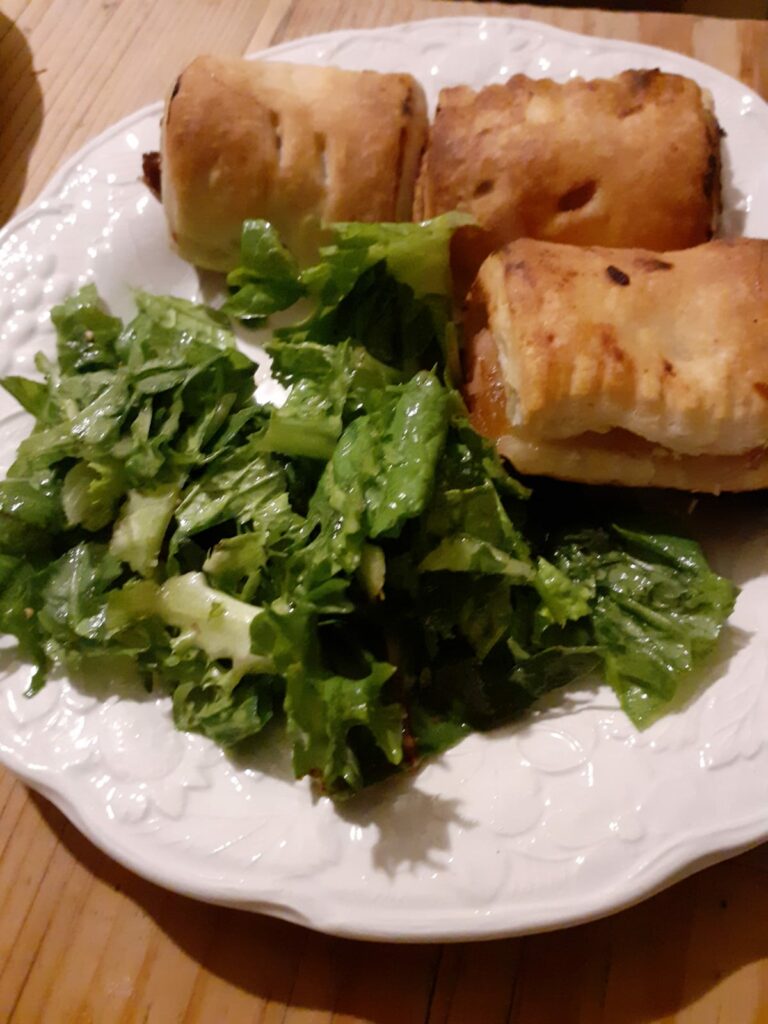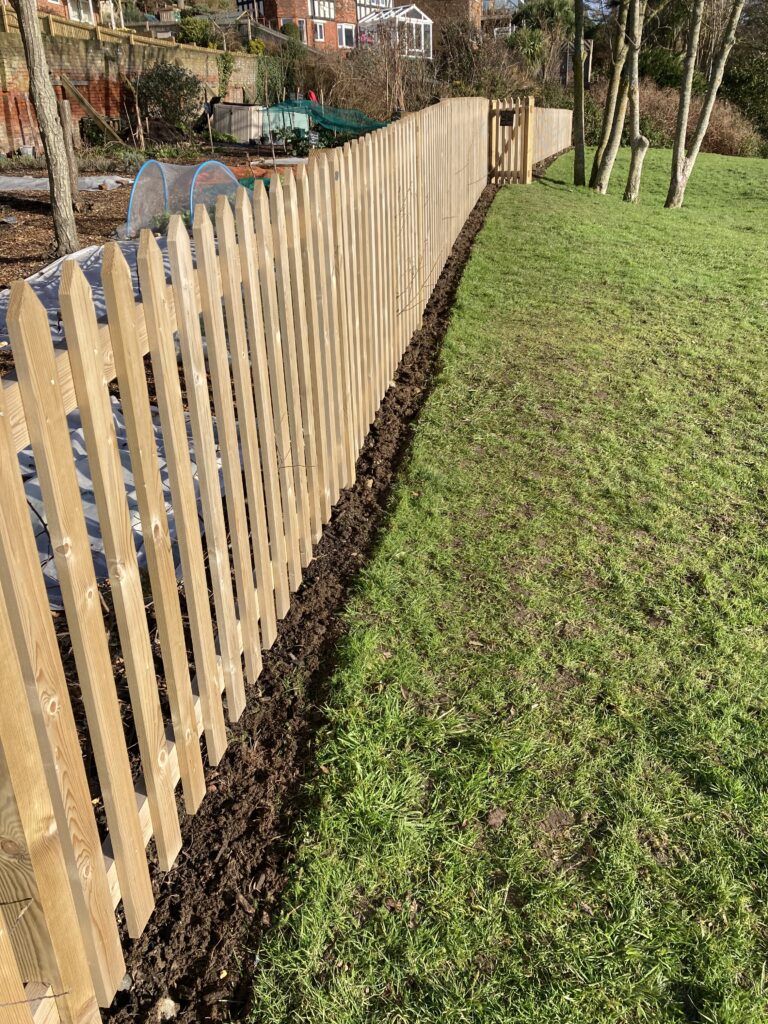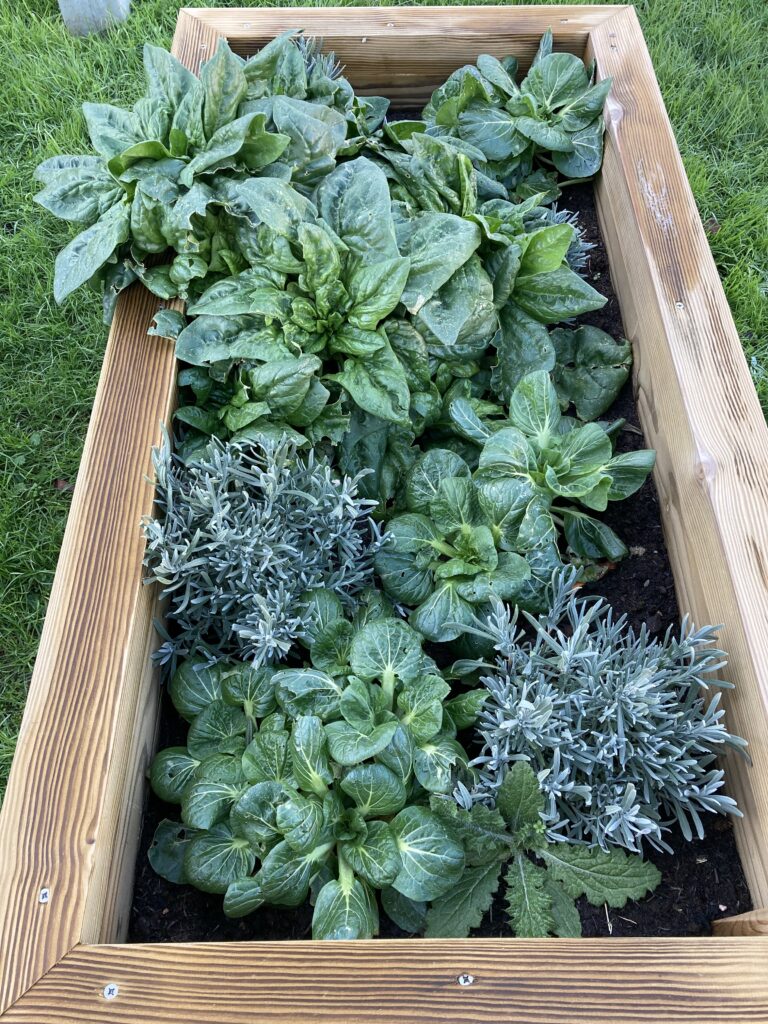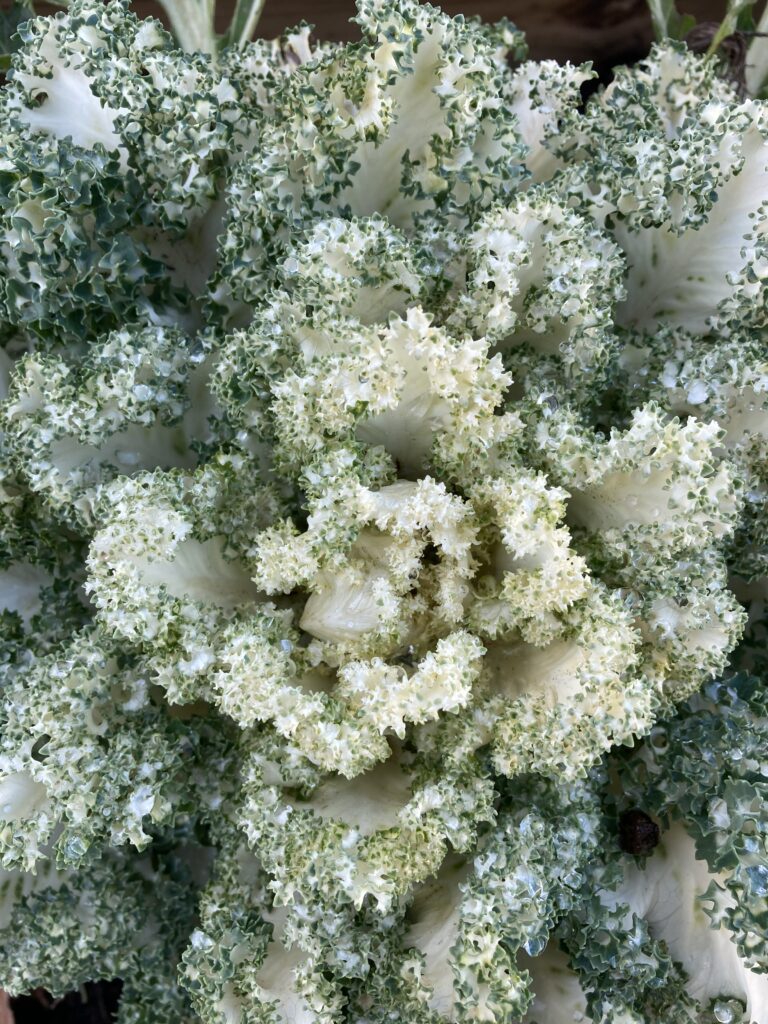More interesting weather this week with it being so cold and wet that it was challenging to find the enthusiasm to get to Enbrook Park for our usual Wednesday and Saturday morning sessions, so not many of the jobs on the list got done at all! The seedlings are coming along fast now at nearly four weeks, and some will be ready next week to be planted. Just the peas for pea shoots made it into the ground to be followed by beetroot, cabbage, broccoli, spring onions and possibly some lettuces if the weather improves.
This time last year we were picking up our four hop roots from the Hythe Hops Scheme to plant along the wall. Not wanting the garden at Fremantle to miss out on the whole hop growing, beer making and tasting experience, we ordered three more hop plants which were planted at the end of the plot beside the fruit trees and bushes. The plants are known as ‘Prima Donna’, a dwarf hop, and we are looking forward to being able to combine all the hops from the total of seven plants we now have. The Enbrook hops are now in their second year and so it will be interesting to compare how prolific they are compared to last year, and also with the new batch at Fremantle.
This year we are sowing and growing much more in the way of flowering annuals as our contribution to Kent’s Plan Bee. In view of the fact we have various pockets of land around Sandgate as well as planters to fill up and look after, growing from seed is all important. We are excited about a new area of the Enbrook garden being prepared for butterfly and moth attracting flowers which are bound to appeal to the bees and hoverflies too.
This week the green outside the chip shop in the High Street was weeded and cleared then given a mulch of compost ready for some flowering annuals as soon as they can go outside. We hope you will be able to notice our contribution in the way of herbs, vegetables and flowers popping up all over Sandgate in the summer months.
What’s next?
- All the jobs listed last week still need doing.
- Plant veg seedlings and cover with fleece
- Prick out the lettuce seedlings and flowering annuals

Prima Donna hop root 
Hops and posts in place at Fremantle 
The border on the green


